The Michelin Guide began when the tire company — Michelin Tires — wanted to encourage travelers to drive to their destinations, in turn boosting car and tire sales. This helpful guide offered maps, attractions, and briefly mentioned places to stay and eat. The publication began as a travel guide to encourage day trips and now covers a range of prestigious ventures such as the flavor and personality of dishes at restaurants. Today, the coveted Michelin stars are awarded to the very best of the best restaurants.
According to The International Culinary Center, US-based restaurants only became eligible for Michelin stars in 2005, and the list continues to grow. The ratings range from one to three and rank the most sophisticated and successful restaurants around the world.
Bvlgari Hotels & Resorts is proud to announce that both the hotel’s signature restaurants, the Italian Il Ristorante — Niko Romito and the Chinese Bao Li Xuan, have been awarded Michelin stars during the Michelin Guide Shanghai 2020 presentation ceremony.
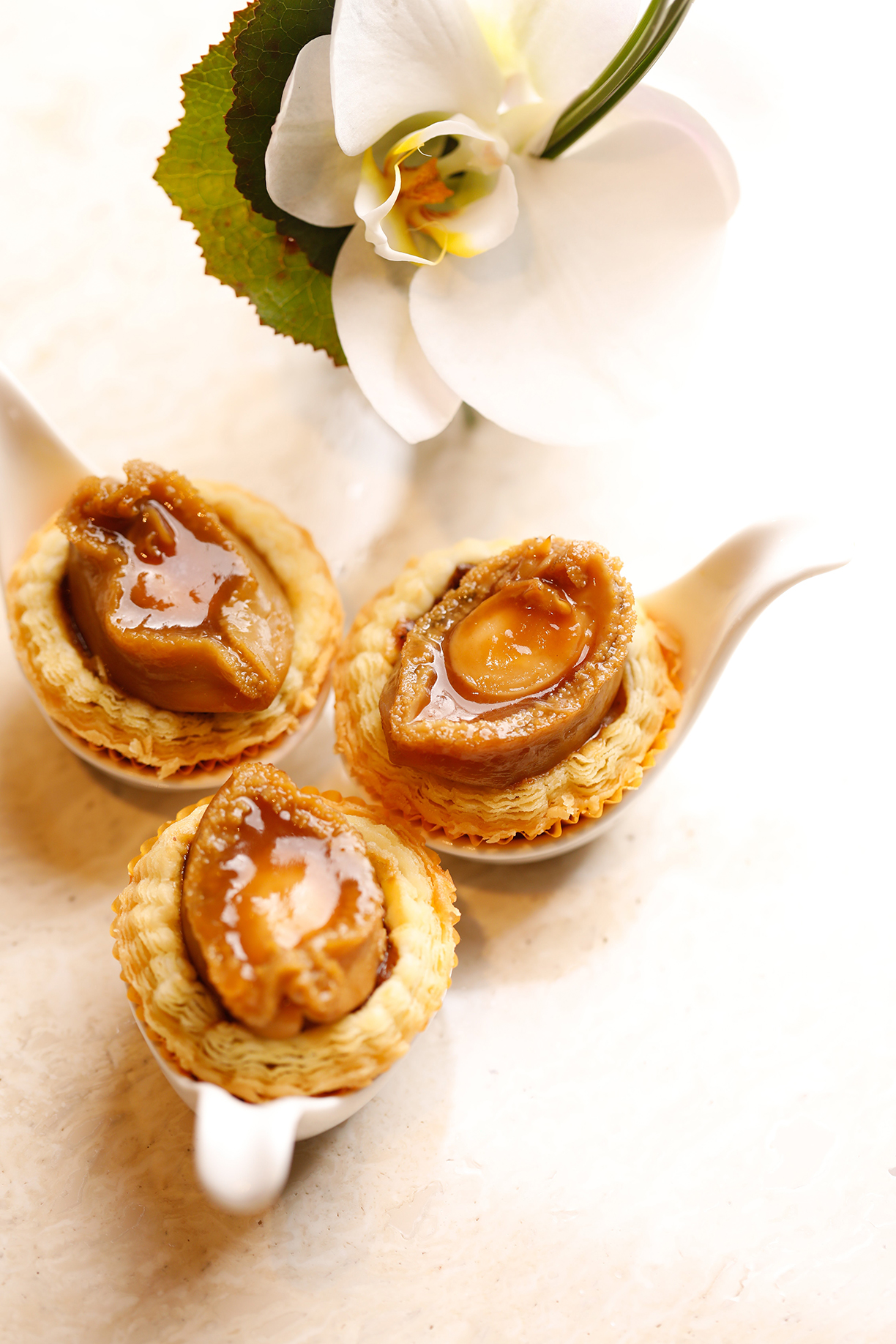
Bao Li Xuan — 1 Michelin Star
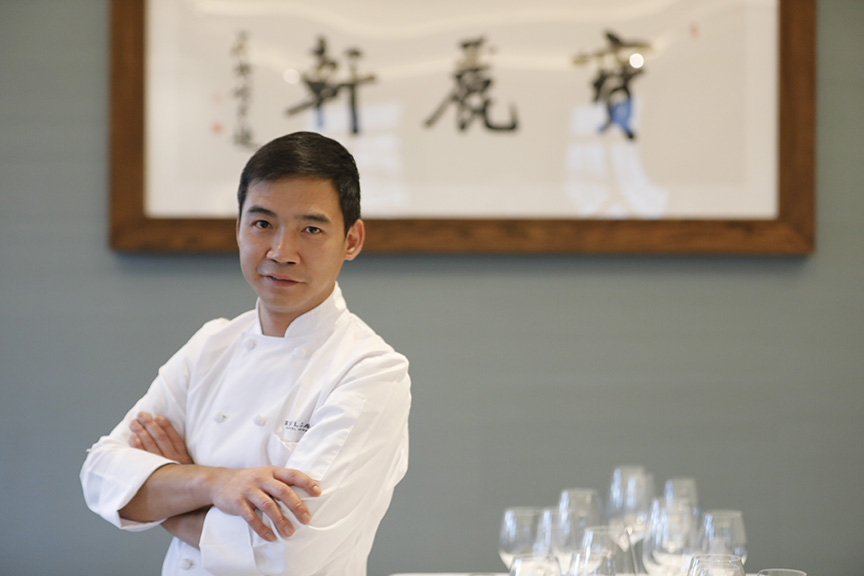
Located in Bvlgari Hotel Shanghai’s historic Chamber of Commerce Shanghai building, Bao Li Xuan will celebrate its first anniversary in October 2019. An enchanting blend of classic nostalgia and metropolitan modernity framed by its unique heritage setting dating back to 1916, the restaurant serves exquisite Cantonese cuisine prepared by Chef Fu from Hong Kong.
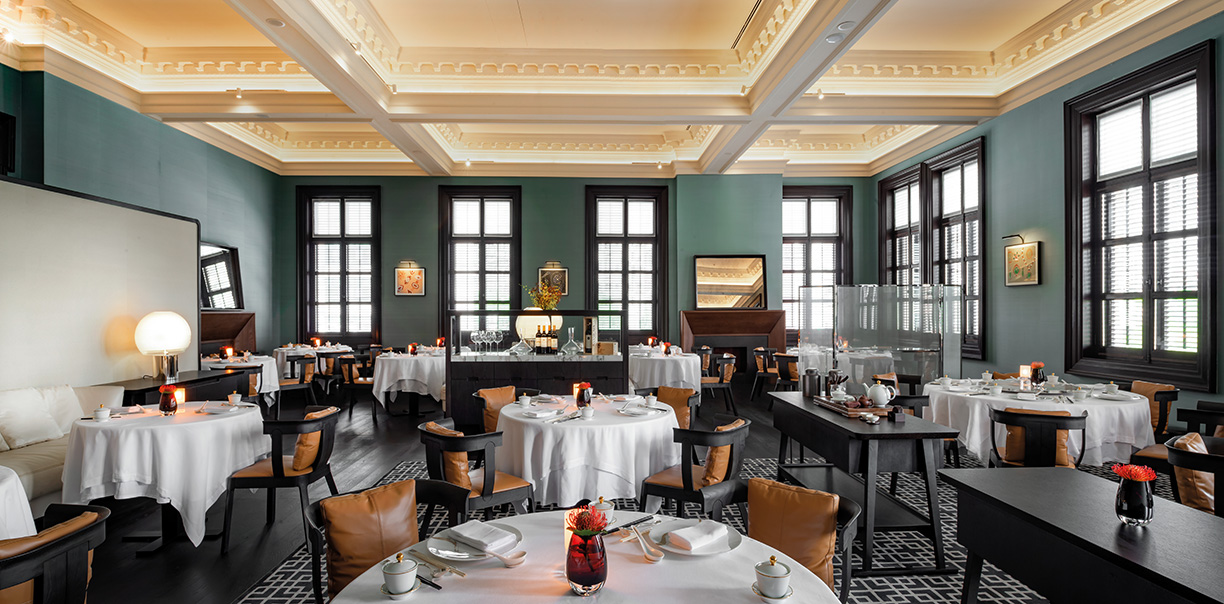
II Ristorante — Niko Romito — 1 Michelin Star
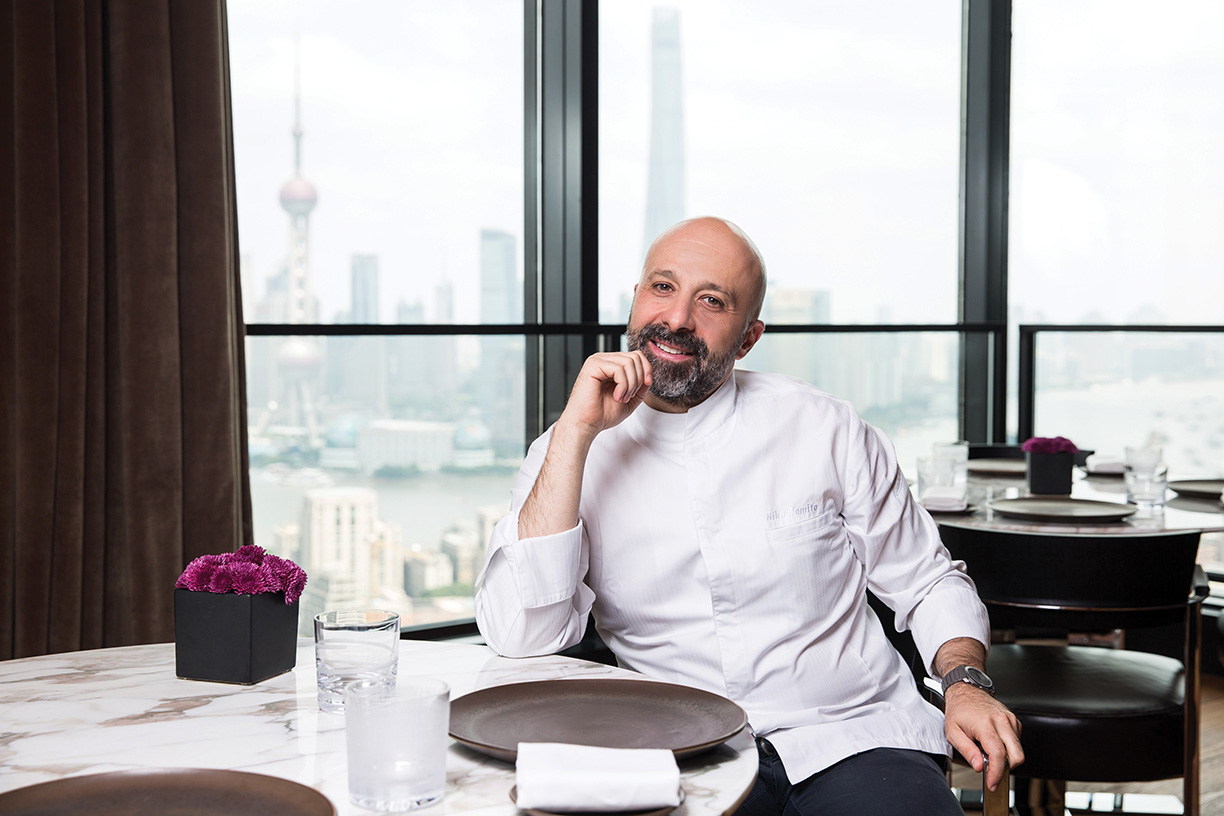
Il Ristorante — Niko Romito represents a unique collaboration between Bvlgari Hotels & Resorts and the renowned Italian chef-patron of 3 Michelin star restaurant Reale in Abruzzo. Showcasing a new gastronomic concept that the chef specially designed for Bvlgari Hotels & Resorts, Il Ristorante — Niko Romito is currently present in the Bvlgari properties of Dubai, Beijing, Shanghai, and Milan. Niko Romito is one of very few Michelin-awarded chefs in Italy to receive this prestigious acknowledgment by the Michelin Guide both in his home country and internationally.
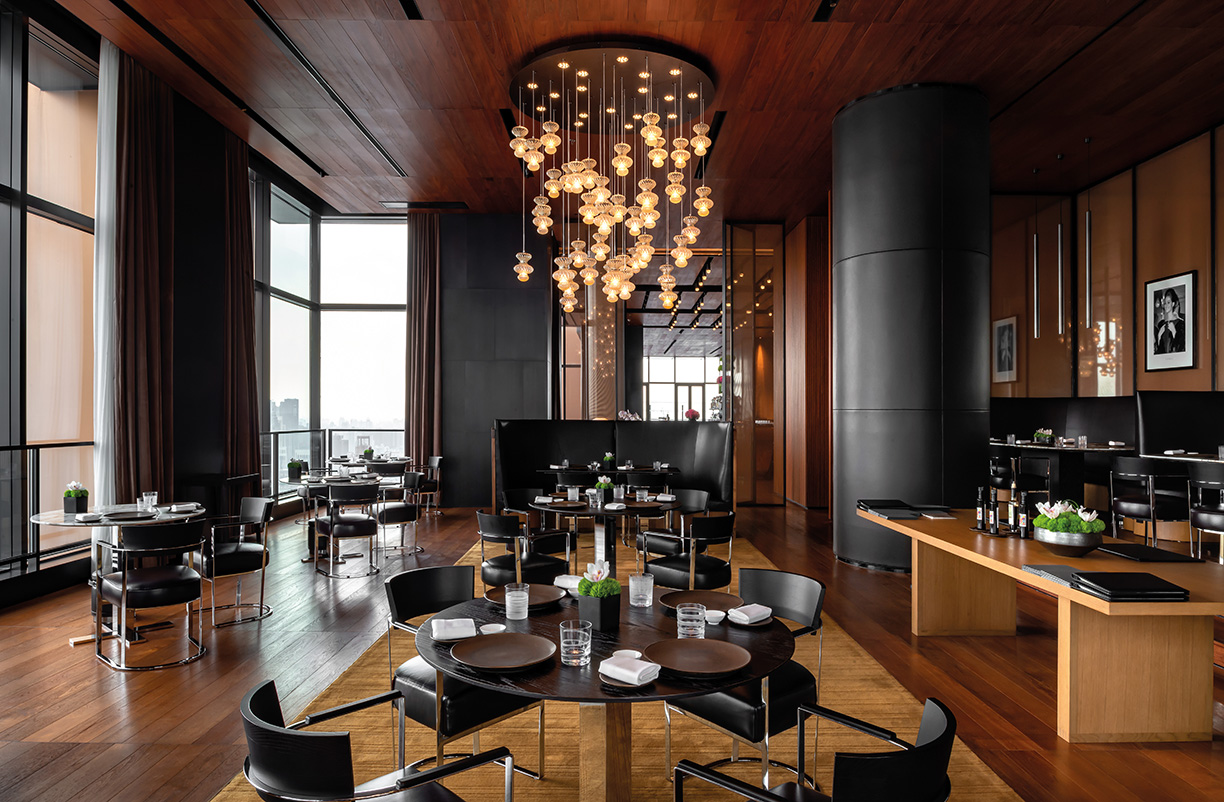
Other Michelin Rated Restaurants To Try
Michelin Rated Italian
Giovannelli (Kerry, Ireland) — Italian cuisine crafted from homemade pasta and fresh local herbs.
Crust (Phuket, Thailand) — A cozy setting for Italian classics, such as scallops with truffle risotto and tiramisu.
Hos Thea (Oslo, Norway) — This small but well-established Italian restaurant only used the freshest ingredients.
Michelin Rated Chinese
Daguan Noodle (Chicago, Illinois) — Chinese cuisine with a twist on comfort, think rice noodles and steaming bowls of broth.
Duck & Rice (London, England) — A converted pub serving delectable Chinese classics with fireplaces and booths for added comfort.
Wei Lou (Seoul, South Korea) — Located on the 34th floor of Grand InterContinental Seoul Parnas, the spacious venue, delectable favorites make it ideal for large gatherings.
Photos courtesy of Bvlgari Hotels & Resorts
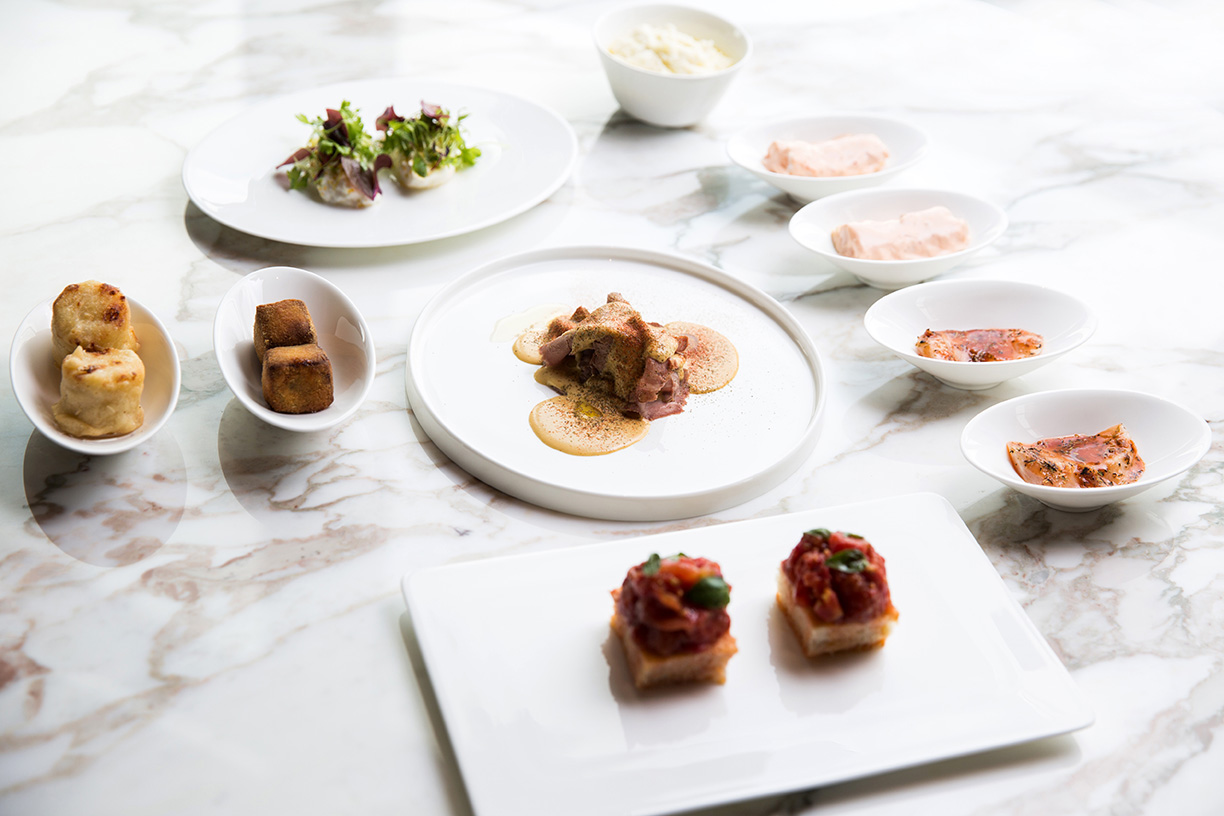
For similar content, try; Mainstream Middle Eastern, Cutting Edge, Catering to Today’s Food Trends, Gourmet Food Halls.
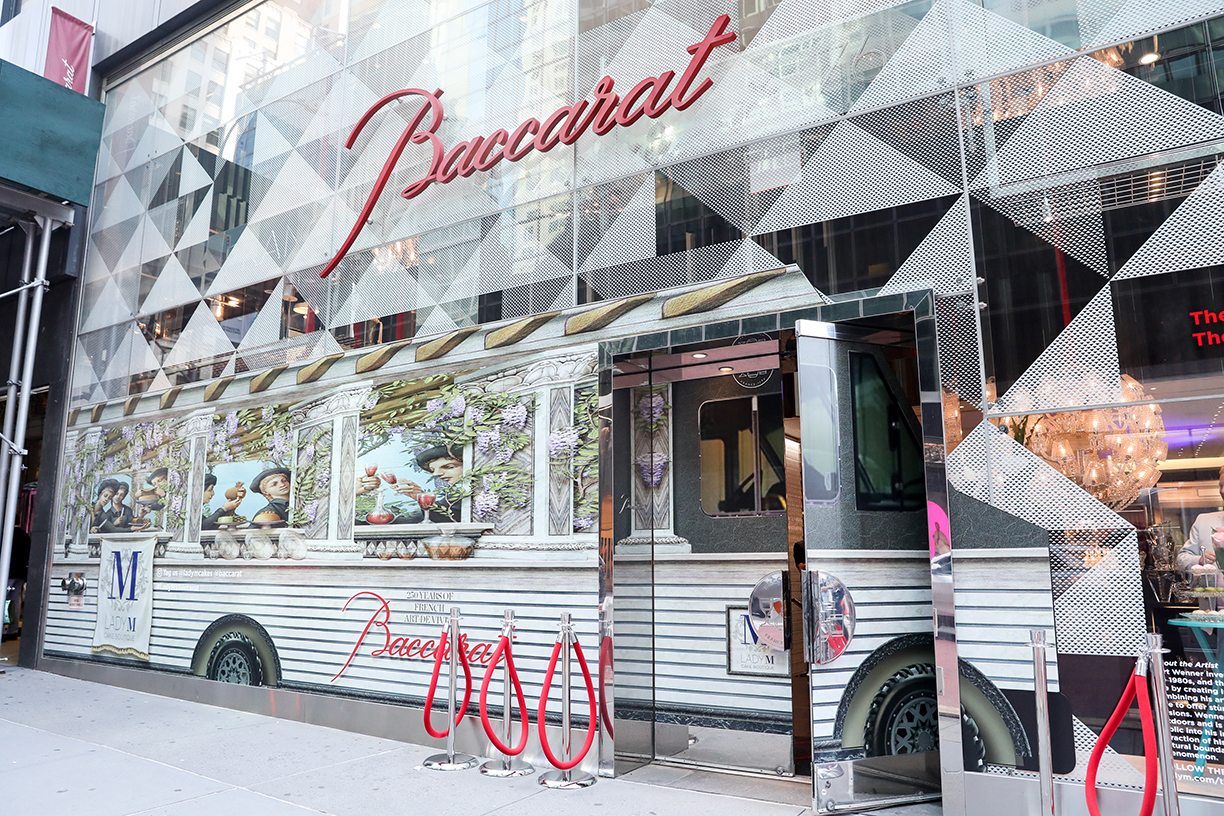
Lady M Cake Boutique, known for elegant, multi-layered Mille Crêpes cakes, has partnered with French luxury brand Baccarat to launch its first luxury cake truck in California.
Alongside 3D Artist Kurt Wenner, the five-year partnership will launch the cake truck in New York City at the Baccarat Boutique on Madison Avenue, and travel across the country before commencing operation in California. Set to start serving August 2019 in Northern California, the 28-foot multi-functional luxury cake truck will journey throughout California greeting new and existing clients of both brands with a unique cake experience.
“Baccarat is thrilled to be partnering with Lady M on this new and innovative collaboration,” says Jim Shreve, President and CEO of Baccarat North America. “Our partnership reinforces the Baccarat message of enjoying beautiful things every day. We are excited to share delicious cakes on beautiful Baccarat. Everything tastes better on Baccarat.”
From the sidewalk, pedestrians and guests will experience the Kurt Wenner 3D, life-sized rendering of the cake truck that will be affixed to the boutique’s glass façade. Inside, guests will meander through the boutique surrounded by Lady M cakes, capturing the feel of being in an actual Lady M boutique. Within the boutique, guests will be greeted with a glass of champagne as they approach yet another version of the cake truck, where Lady M Mille Crêpes will be served through a functional service window.
The Lady M x Baccarat cake truck is a stunning and luxurious feast for the eyes. On the exterior, Baccarat has mounted two large Tuile de Crystal Chandeliers ($29,100 each) and 1 small Tuile de Crystal ($12,600) that will gracefully hang suspended from two long beams that are collapsible when the food truck is not in service. Four Baccarat Mille Nuits Torch sconces ($2,150 each) will mount on either side of the service windows. During the day, Lady M will provide legendary service to clients who pre-order cakes. During the evening, Lady M and Baccarat will illuminate the night and create an outdoor dining experience for those who want to experience both brands.
“The collaboration with Lady M and Baccarat has allowed me to have an entirely new experience with interactive art. Placing my art on a food truck is a first for me,” says artist Kurt Wenner, who invented 3D Pavement Art in the 1980s. By combining his art with digital printing, Wenner offers stunning, durable, interactive illusions.
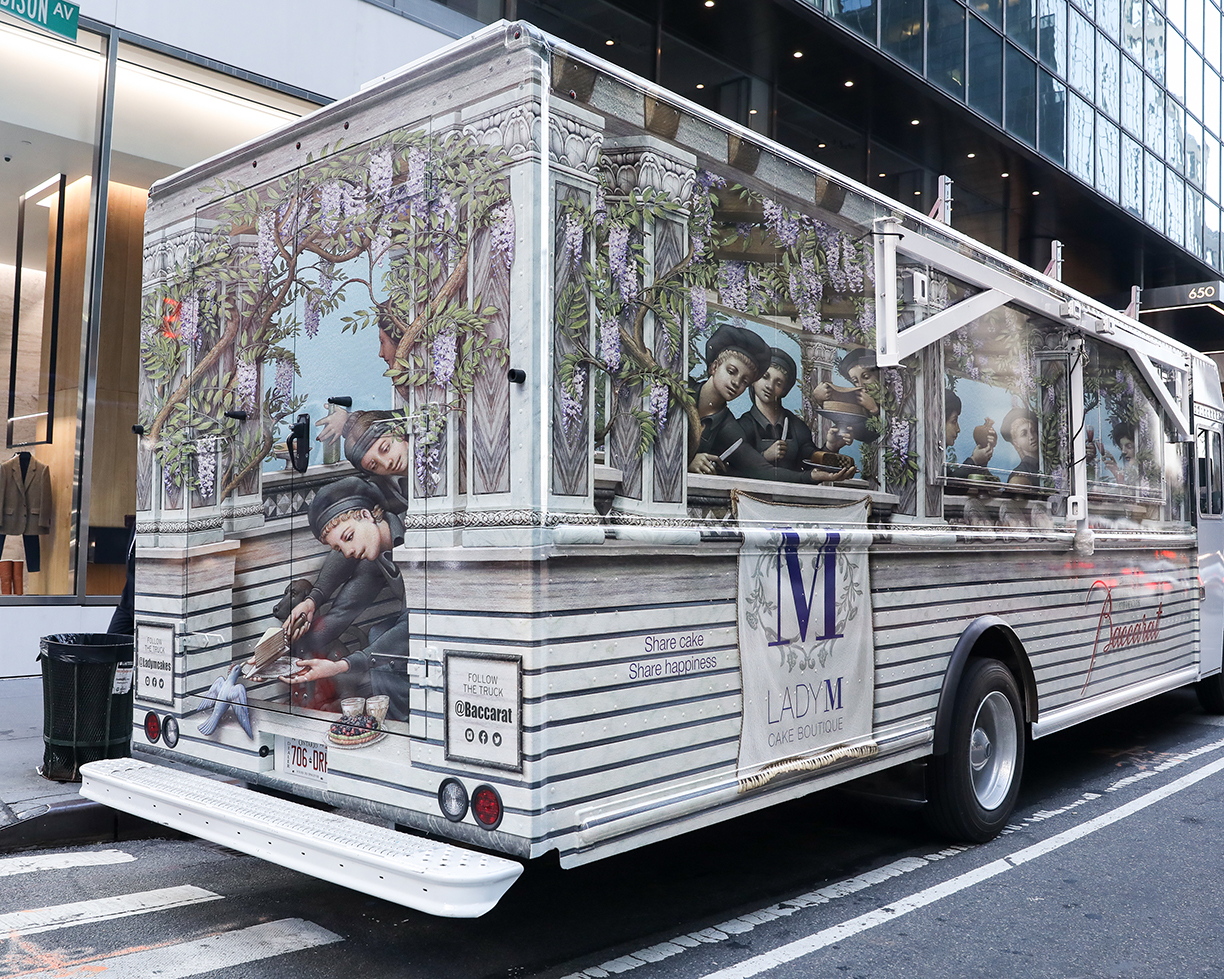
This collaboration is the first of its kind, and Lady M Cake Boutique is thrilled and honored to partner with Baccarat. We are excited to expand the concept of the Lady M experience and take our cakes (including a new confection made exclusively for the collaboration), on the road, introducing them to those both new to and familiar with the brand. We look forward to sharing our signature cakes on beautiful crystal, and sharing happiness.
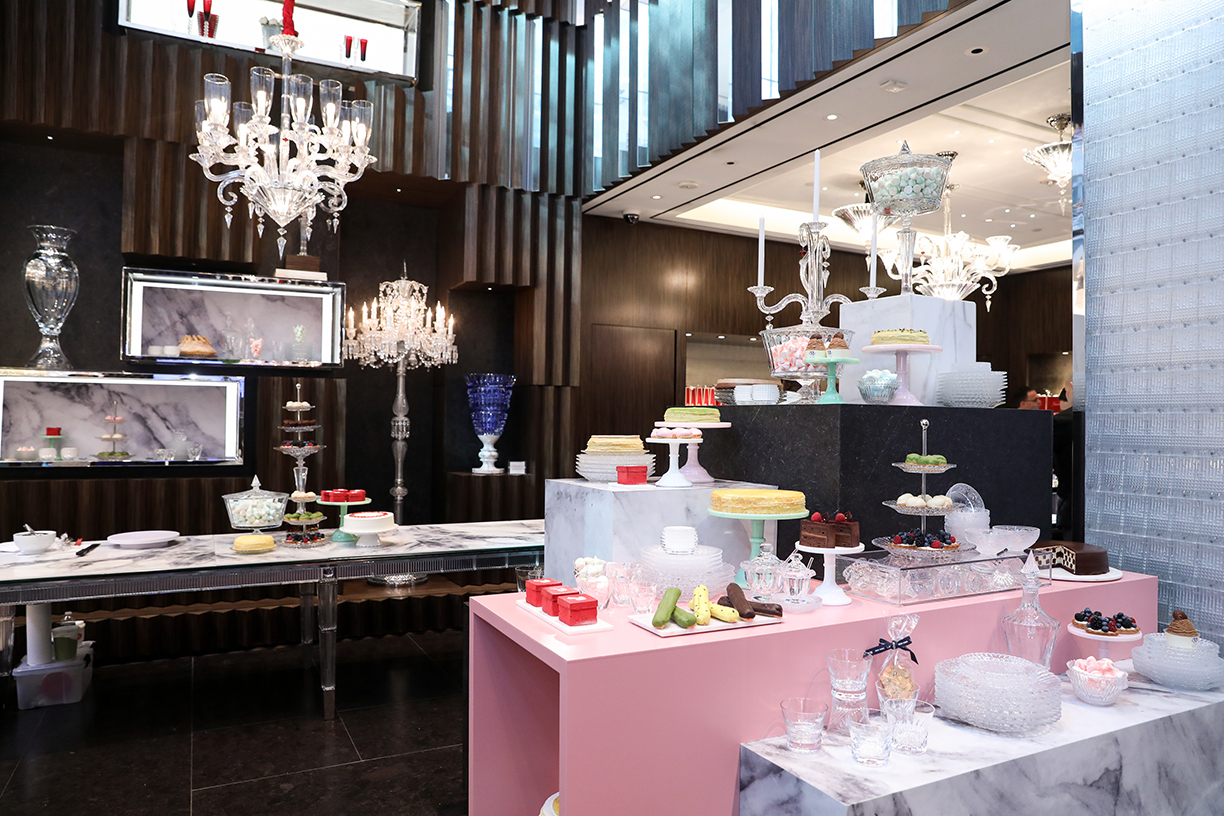
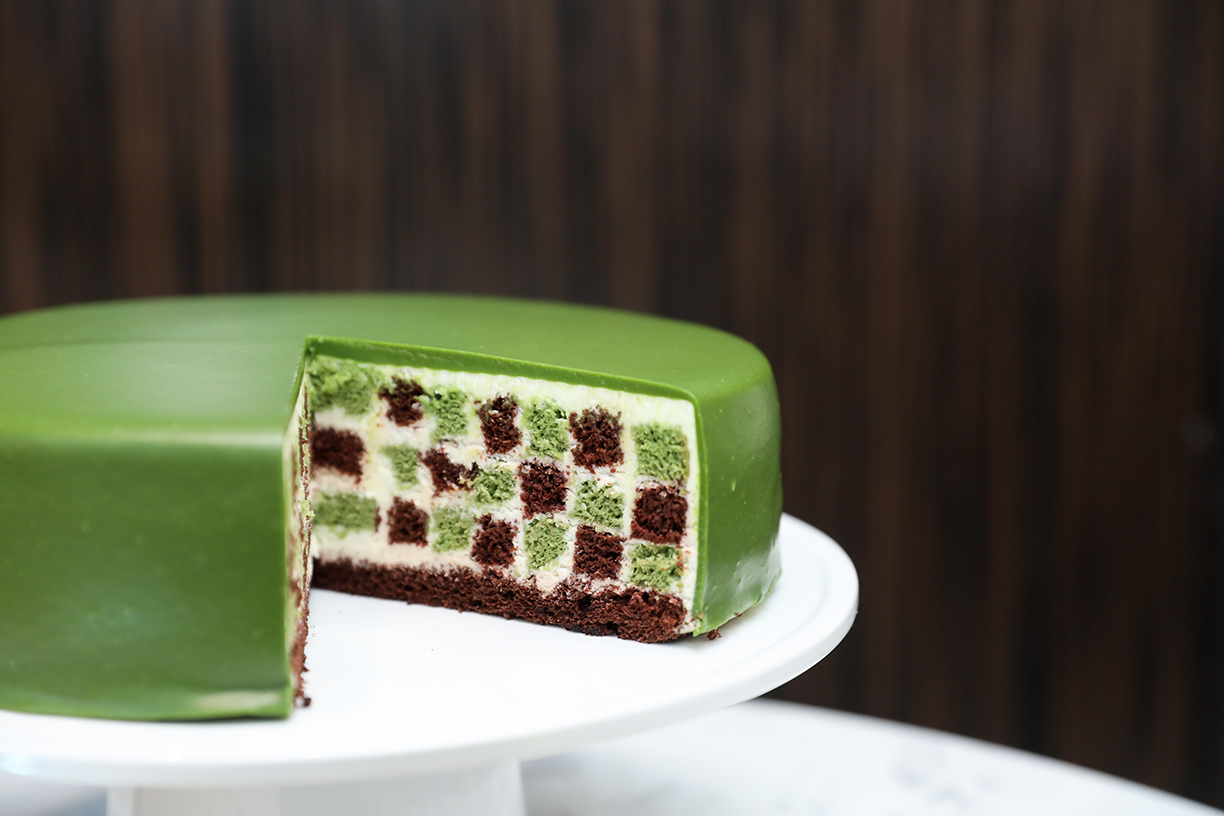
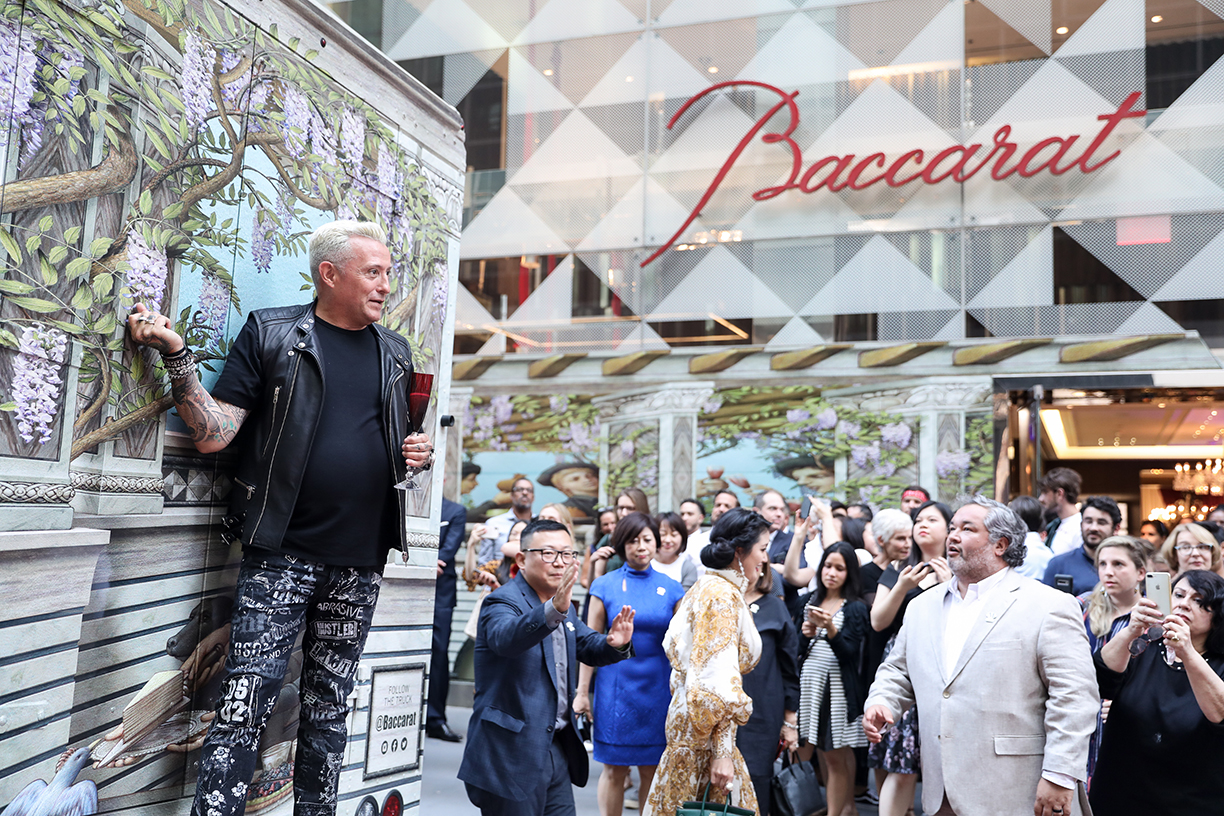
“My 3D illusions are where the language of proportion and innovation meet. I’m so excited about this project as the illusions I have created will be partnered with elegant chandeliers and the world’s finest cakes. The marriage of all three will shift the perception of what is reality,” says Wenner.
The cake truck will start service starting this month in Northern California, and guests are encouraged to tag and follow along with the hashtag #ladymxbaccarat. A microsite tracking the cake truck’s journey throughout California will be live at www.ladym.com/thecaketruck.
All photos courtesy Samantha Nandez / BFA.com
One of the world’s leading Peruvian restaurants, La Mar, by renowned chef Gastón Acurio, is announced as the latest culinary addition to The Royal Atlantis Resort & Residences, set to open late 2020.
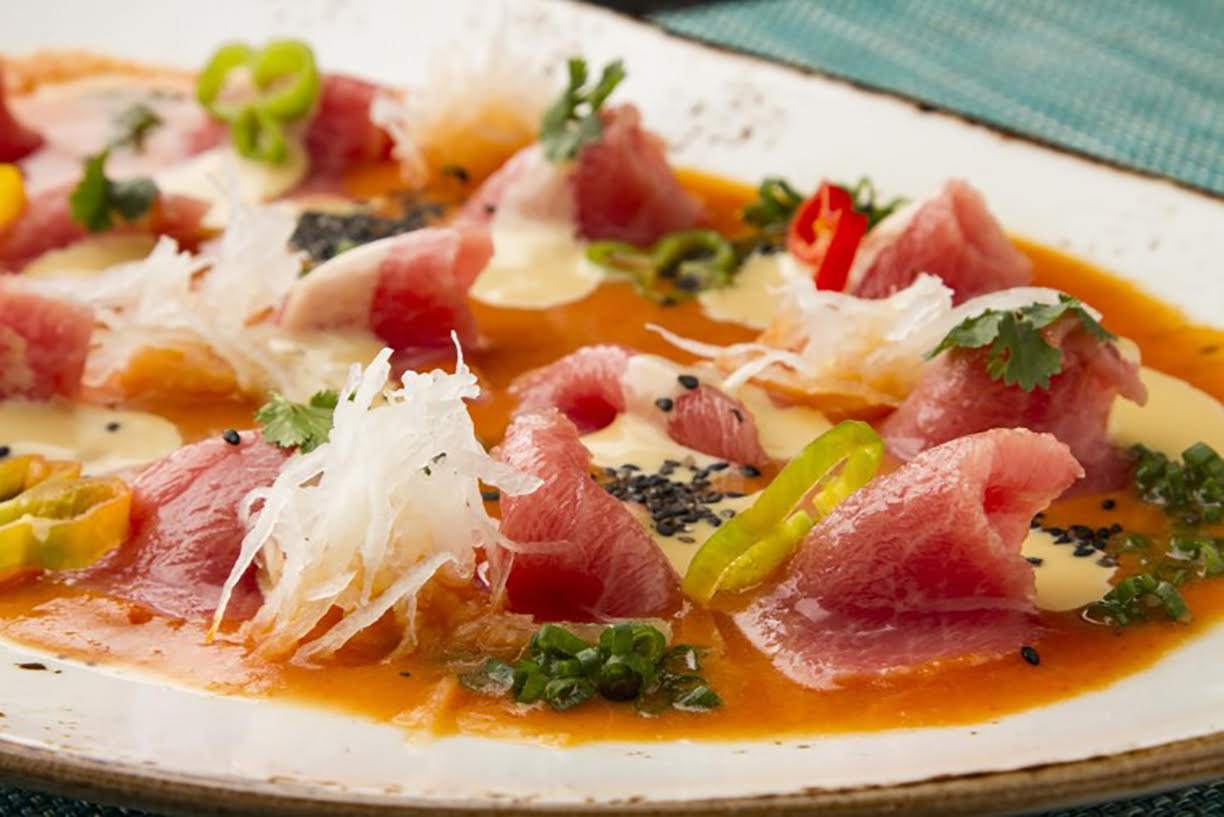
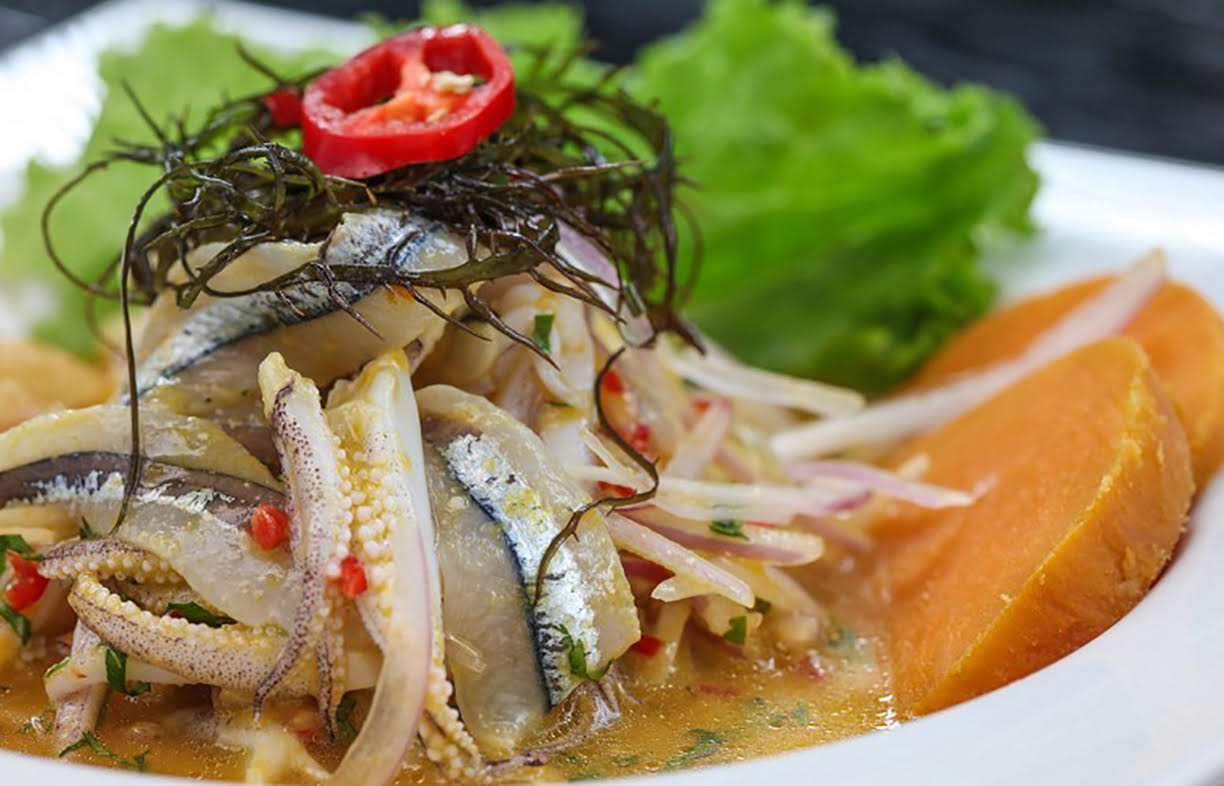
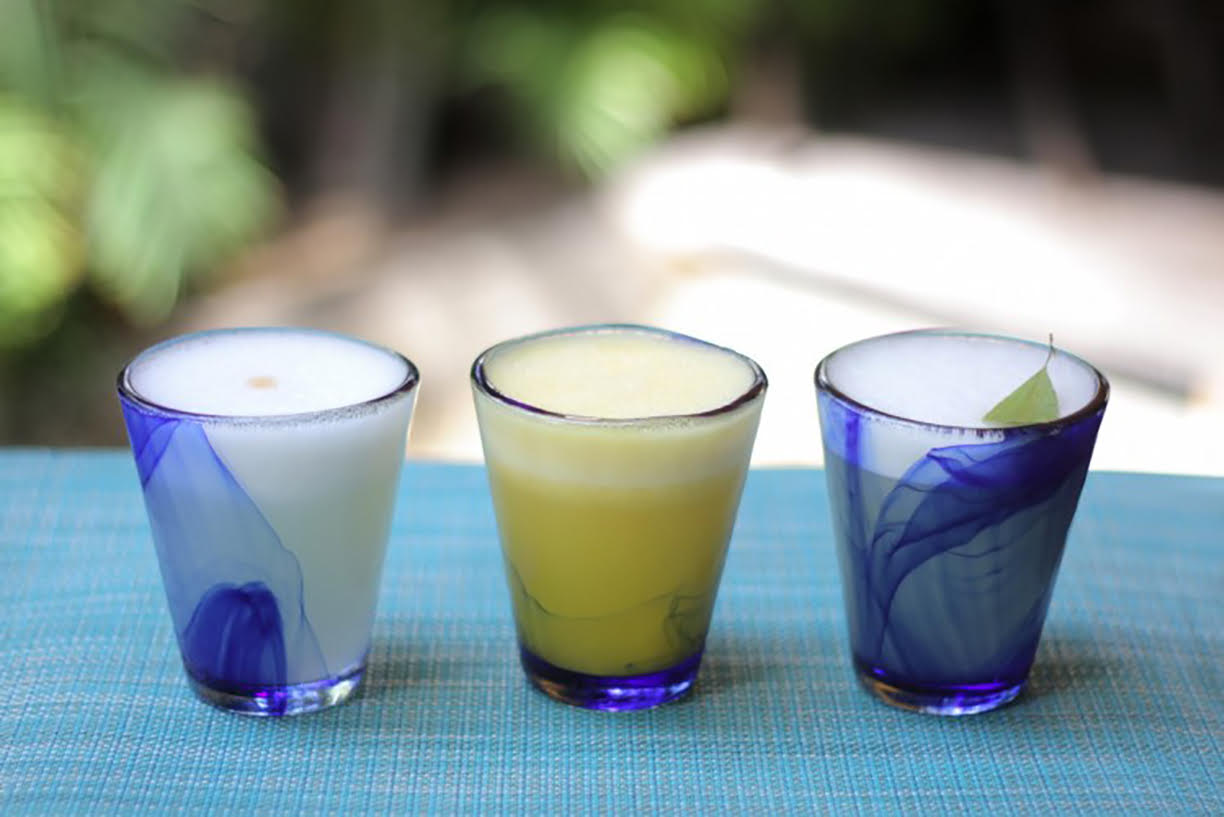
Celebrating the authentic and diverse flavors of Peruvian gastronomy, the restaurant’s contemporary design and elegant interior will provide the perfect backdrop for La Mar’s signature ceviche, freshly grilled anticuchos and pisco-led cocktails.
Renowned for his daring experiments using local ingredients, techniques and recipes, Acurio’s flagship restaurant won the No.1 spot on the inaugural Latin America’s 50 Best Restaurants list in 2013 and has held a place on The World’s 50 Best Restaurants list since 2011.
Now with over 50 restaurants worldwide, including three in America, Acurio has won the hearts and stomachs of worldwide food lovers with his unparalleled ceviche, unique Peking-style guinea pig pancake, and desserts inspired by his childhood. In 2018 Acurio was awarded The Diners Club Lifetime Achievement Award, regarded as one of the most prestigious accolades in the world of gastronomy.
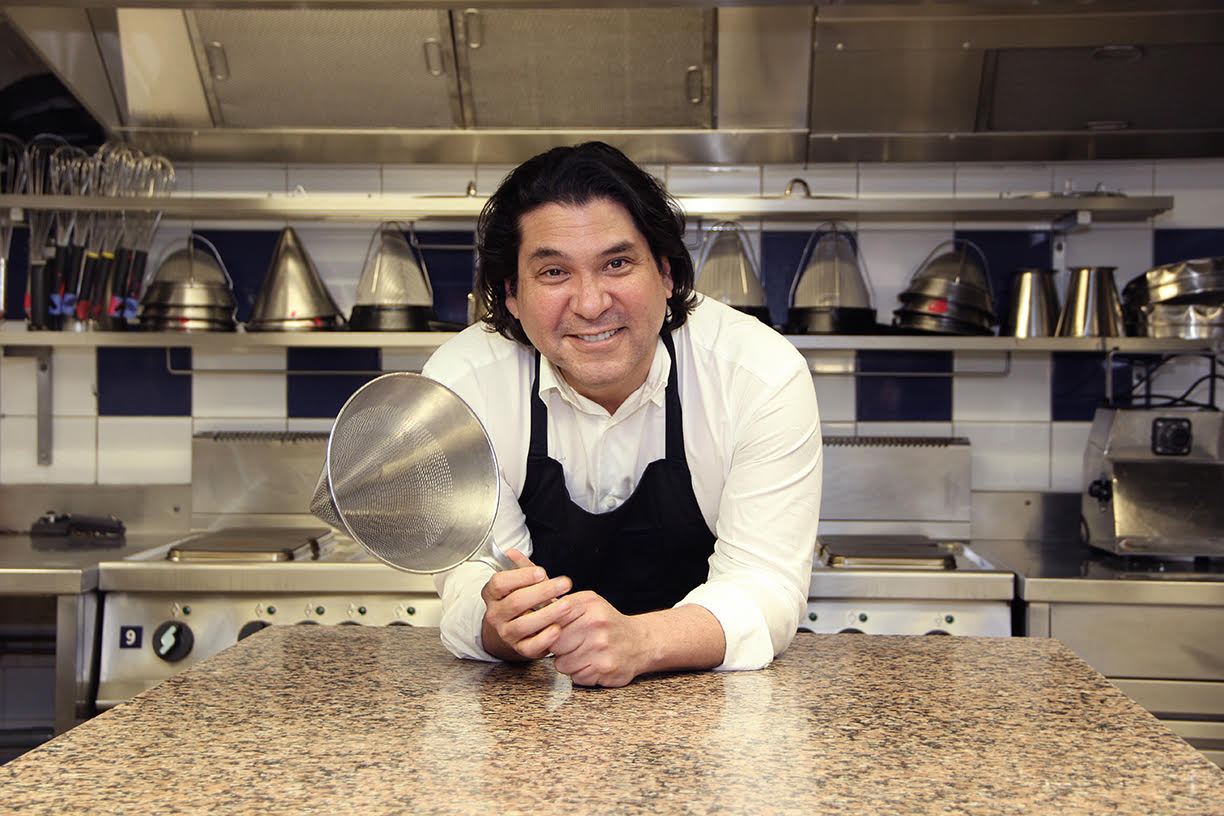
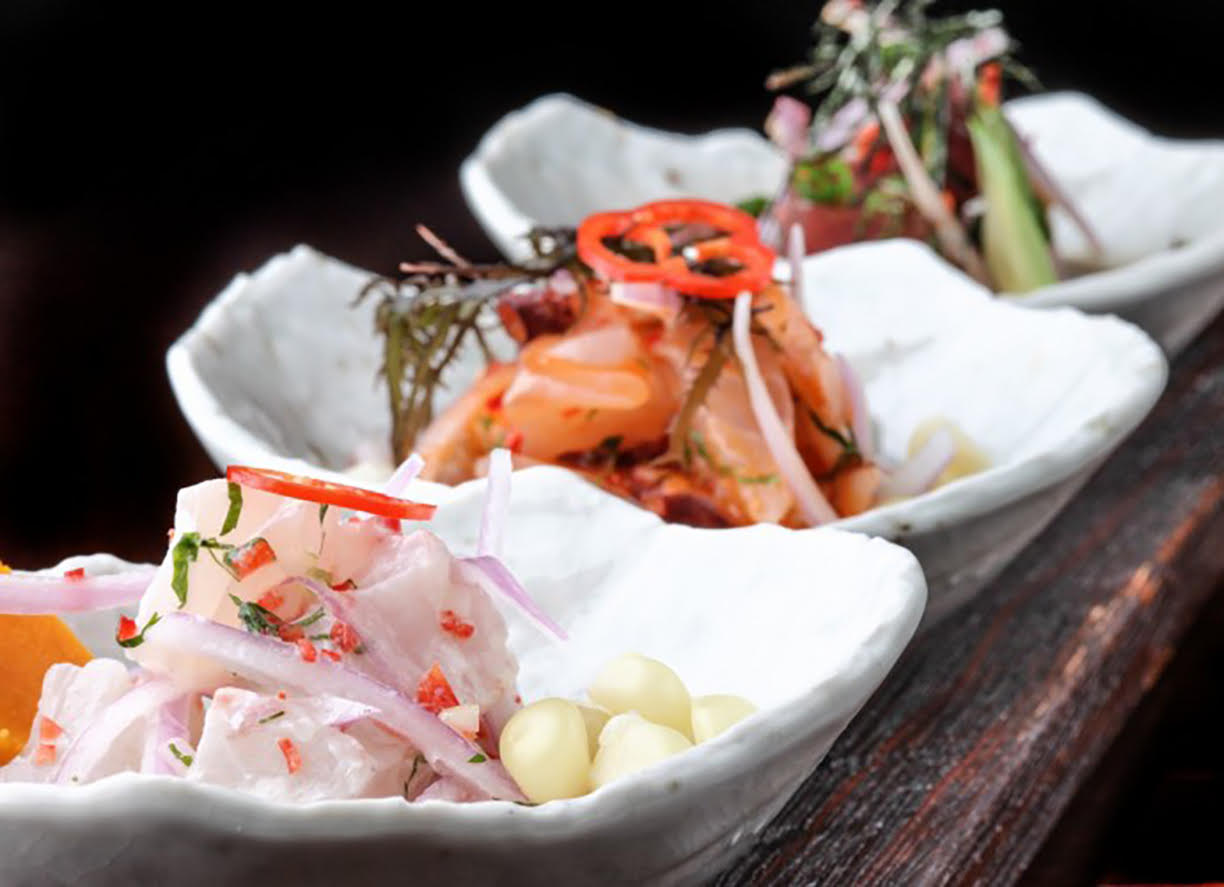
Located at mezzanine lobby level in The Royal Atlantis Resort and Residences, La Mar by Gastón Acurio will be the first traditional cebichería in Dubai, welcoming guests to an intimate space devoted to the South American tradition of ceviche and pisco sour. With a casual elegance and easy-going vibe, the signature features of La Mar will include an open kitchen, ceviche bar and an anticucho grill, where Acurio’s team of expert chefs will prepare marinated fish as well as tiraditos, causas and marinated anticucho skewers.
Inspired by the design of a ‘Fisherman’s Wharf’, guests will be greeted with a high cane ceiling upon entry with natural light spilling in from floor-to-ceiling windows overlooking the Palm Island via a large open terrace. Natural materials such as iron, cement, wood and stone complement a warm color palette of marine blues, green, sandy grey and beige evoking a sense of the ocean at every turn. Handcrafted and locally sourced tableware will emulate rock, coral, the seabed and shimmering fish scales.
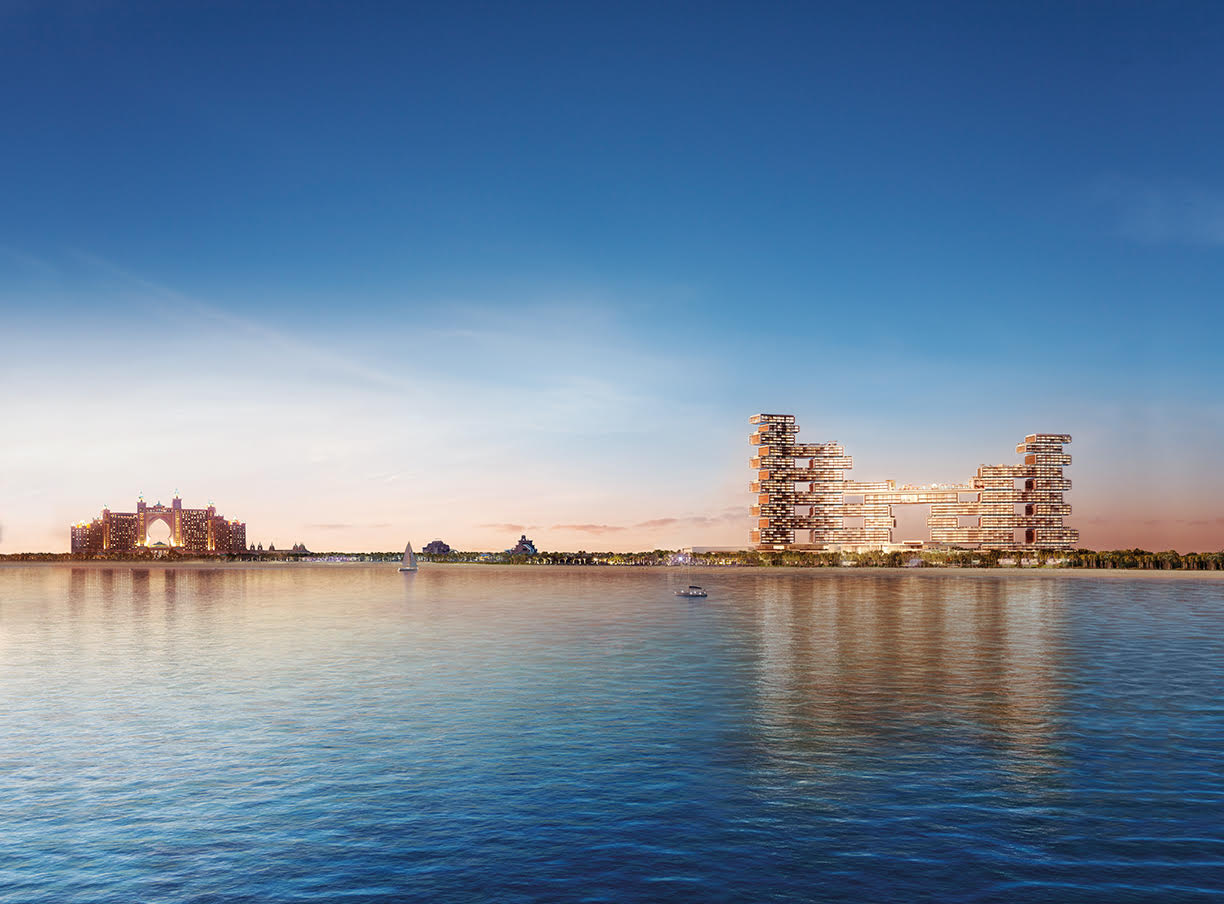
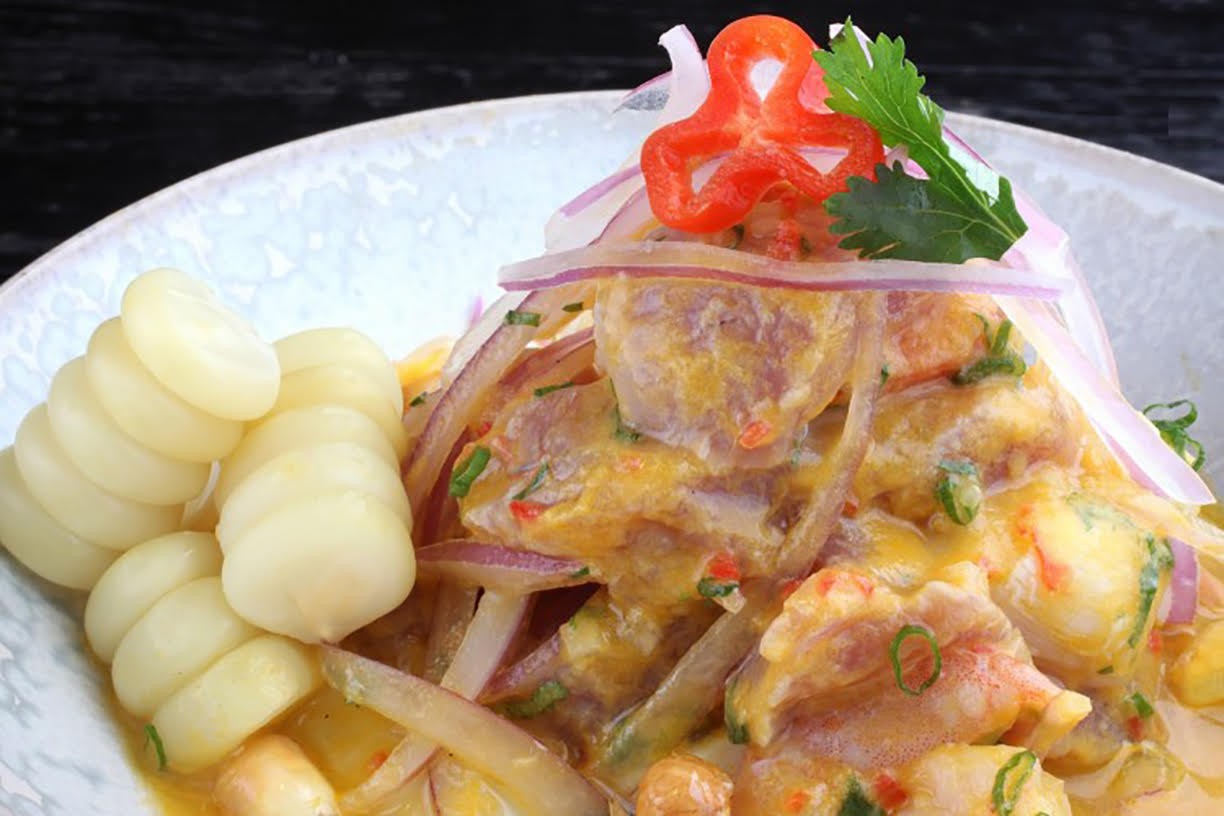
“Dubai is perhaps one of the cities with the greatest gastronomic activity in the world. The best restaurants and the most renowned chefs can be found in Dubai sharing their proposals and concepts with cosmopolitan diners who value and enjoy gastronomy as an activity that unites people and cultures.” — Gastón Acurio.
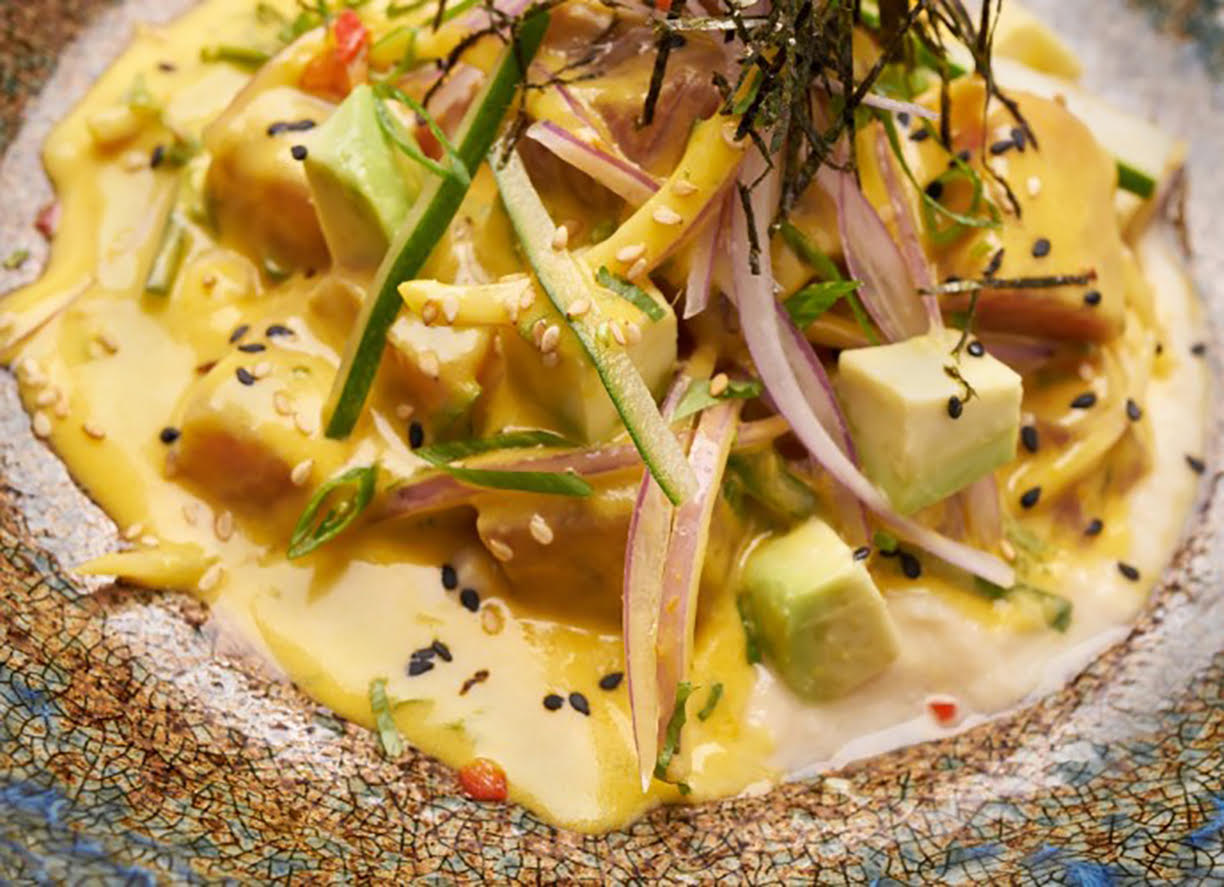
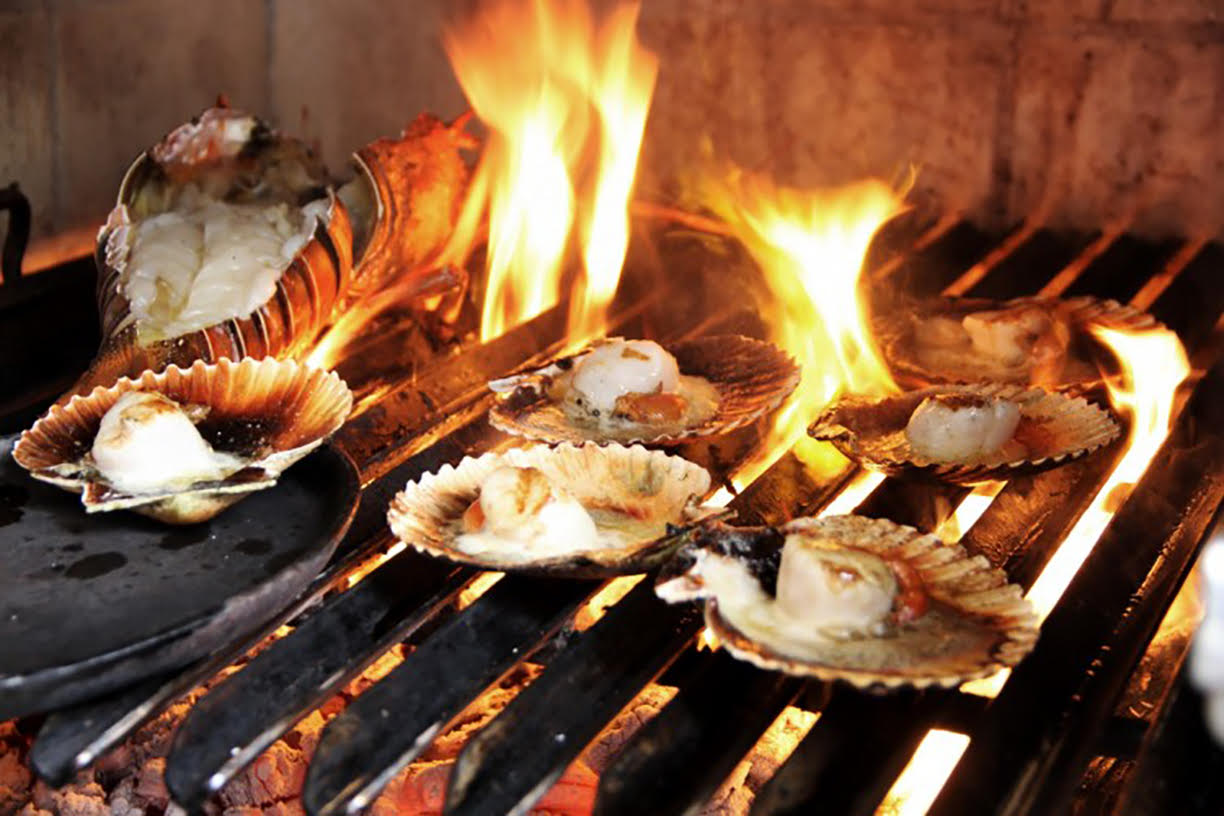
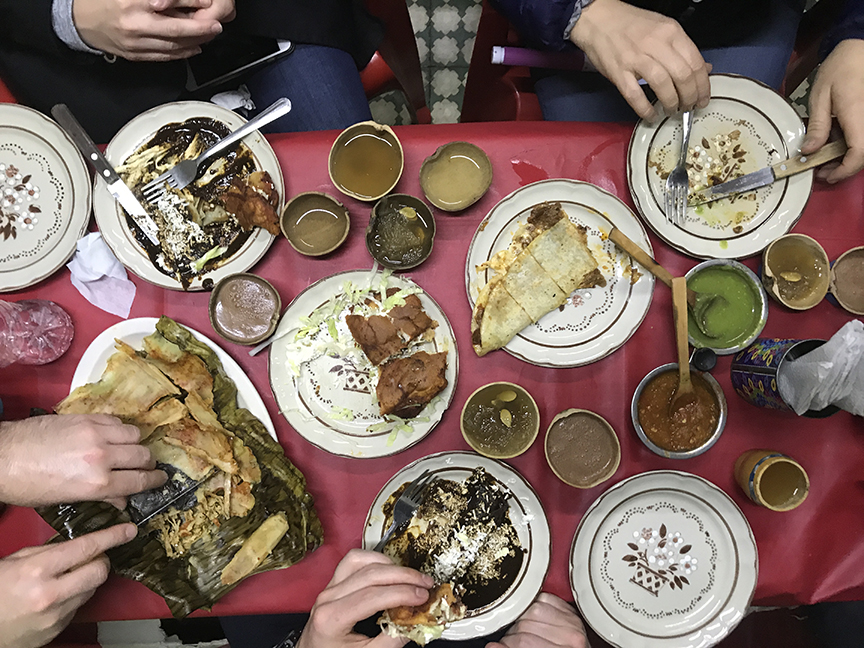
Consistently ranked among the top places to visit, Mexico City is a world capital welcoming more than 12.5 million visitors each year who come for its renowned cuisine, vibrant culture, rich history, unique neighborhoods and modern-day travel offerings. For an insider’s view of Mexico City’s food scene, Rocio Vazquez Landeta, founder of Eat Like a Local Mexico City, helps navigate travelers through the city’s neighborhoods to hidden culinary gems through her expert food tours, three of which will newly debut in 2019.
Born and raised in Mexico City, Landeta is a world traveler and food researcher, as well the owner of one of the first food blogs in Mexico, sin Mantel. After studying Mexican cuisine and culture at the Mexican Gastronomy School, she founded the company to take travelers through the streets of the vibrant Mexico City to taste, explore and connect with Mexico City’s food scene, markets, restaurants and people. “Food is an amazing tool because it is one of the few things that you can experience with all your senses. Through the food, we help travelers connect with the people behind the food. Through the food we create stories and we explain our roots and history.”
Discovering all the great places that only locals know, Eat Like a Local Mexico City’s food journeys showcase cutting-edge restaurants along with secret food stalls and street food that offer the most authentic Mexican cuisine.
The Mexico City Foodie Immersion tour covers all aspects of Mexican food. The 4.5-hour experience begins at a small coffee shop where travelers learn about the coffee culture in the city. With coffee in hand, the tour explores street food delicacies including Mixiotes, basket tacos, and rotisserie chicken. The journey continues to the subway to explore a traditional market with an array of carnitas, corn, tostadas, fruit and chorizo. Travelers then visit La Merced, the second biggest market in the city for candy tasting, pineapple juice, fish tacos and a visit to a local woman’s house for a homemade meal. The tour comes to an end at a hip, modern lounge for authentic cocktails.

For the adventurous eaters, the Street Food at Night and Hidden Neighborhoods tour explores three hidden neighborhoods in Mexico City, San Rafael, Guerrero, Santa María la Ribera, and introduces foodies to eyeball and brains tacos. For the conservative eaters, enjoy al pastor or brisket tacos. Mole is the highlight of this tour and the group will eat traditional homemade black and yellow moles; taste mezcal, tejate, tepache, and other traditional Mexican drinks; and eat birria, chiles rellenos and churros. Finish the evening tour walking around the historic center and learn about Aztec legends while visiting the famous tile house.
However authentic the experiences are, Landeta’s passion for these tours extends further than the plate. “The food in Mexico City is of course is amazing, but our tours are more about getting to know the people behind the food,” she says, from hanging out with the locals, being hugged by the kids at the market and more. “Everybody says that they absolutely love the food, but what makes Eat Like a Local special is the people working with us — the guides, the vendors, the kids and the chefs.”
Eat Like a Local Mexico City is also the only Mexican-founded food tour agency that actively promotes economic growth and creates opportunities for families within the traditional markets. All of Eat Like a Local’s food tours support the local community. For example, the Mexico City Foodie Immersion tour supports the 80 IQ program, a program where 12 children at the La Merced Market learn English, receive monthly mentorship, participate in recreational activities and also, work as guides during the weekends. The Mexican Wine and Pulque Journey supports single mothers from La Merced Market through lending business advice and exposure, participation in pop-up events and mentorship. The Street Food at Night and Hidden Neighborhoods tour donates food and meals to homeless people as well.
In the end, everything comes back to the heart and home for Landeta. “Every dish has a soul, each cook creates dishes with his hands but also with his heart. Eat Like a Local creates a love affair with the food, but also with the people,” she says.
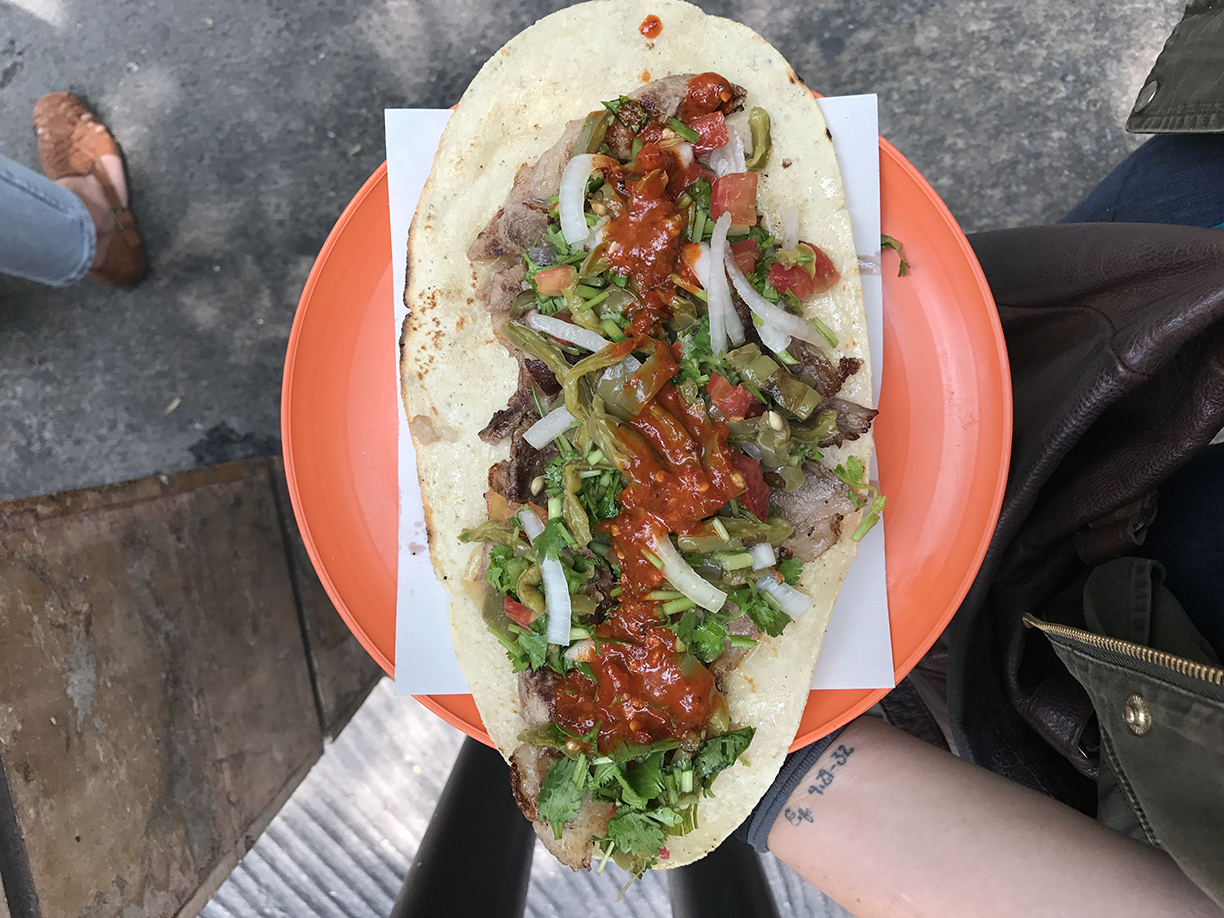
The Mexican Wine and Pulque Journey is hosted by Sara Garza, a sociologist who grew up in the Roma neighborhood. Guests explore Garza’s favorite spots including the traditional places she grew up eating at, as well as new, trendy hotspots. Starting at Eno, Enrique Olvera´s famous deli, taste green pozole, pastor tacos, Mexican-Argentinian tacos and more. Travelers will learn about Pulque, the pre-Hispanic drink made from the agave plant. End the afternoon at a winemaker´s shop where the group tastes four different Mexican wines paired with Mexican craft cheese. The tour unveils the hidden history behind the wineries and guests will learn about the Mexican wine world with an expert.
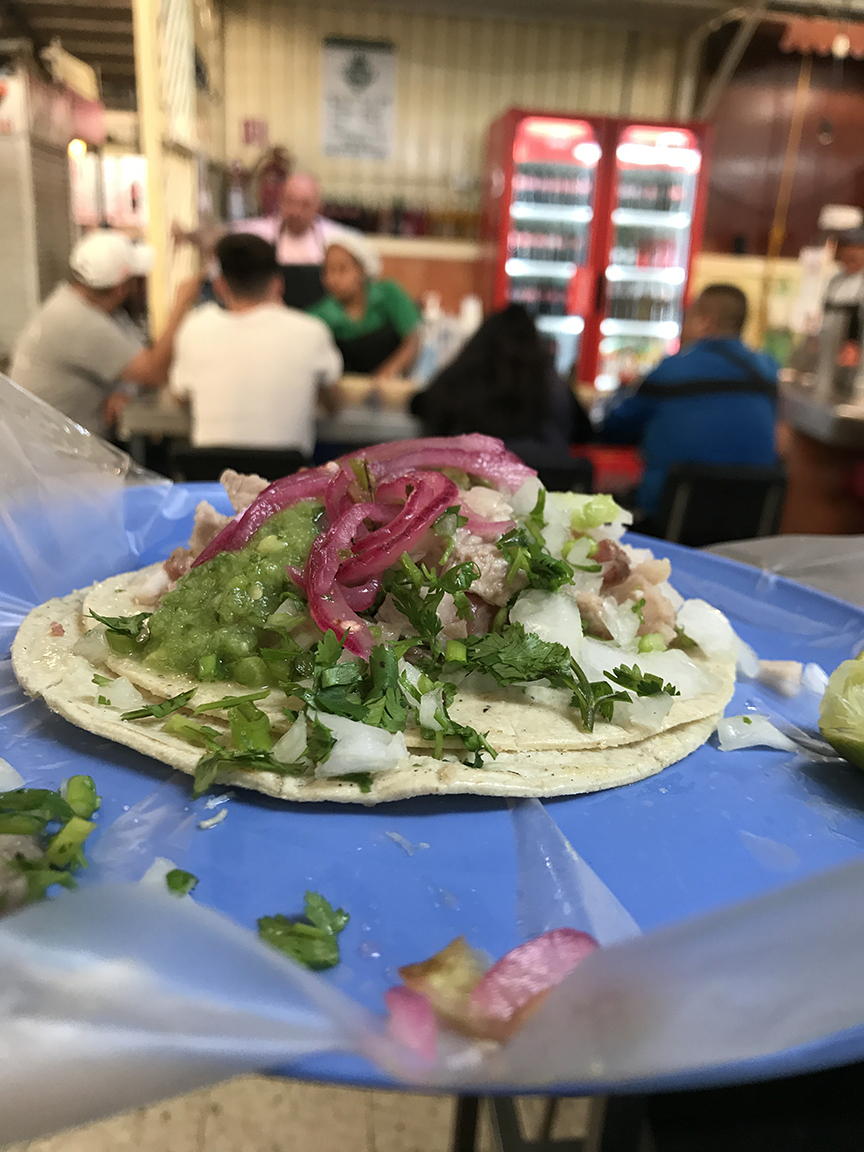
All photos courtesy Eat Like a Local Mexico City.
Once relegated to unpretentious mom-and-pop eateries, the diverse cuisine of the Middle East has graduated to sophisticated, award-winning restaurants across America.
Every Middle Eastern culture has its own food (some countries even have distinct local cuisines), but culinary boundaries are much more amorphous than national borders. Despite a surprising degree of cultural diversity, the region’s indigenous products — chickpeas, dates, pomegranates, saffron, and olive oil, to name a few — result in some universal themes, even among adversaries.
Additionally, the use of spices like turmeric, cumin, garlic and sumac contribute to consistencies from Israel to Turkey, Lebanon to Iran. The cooking of all of those distant lands is drawing unprecedented interest among American diners, who are attracted by both its exotic qualities and relative healthfulness.
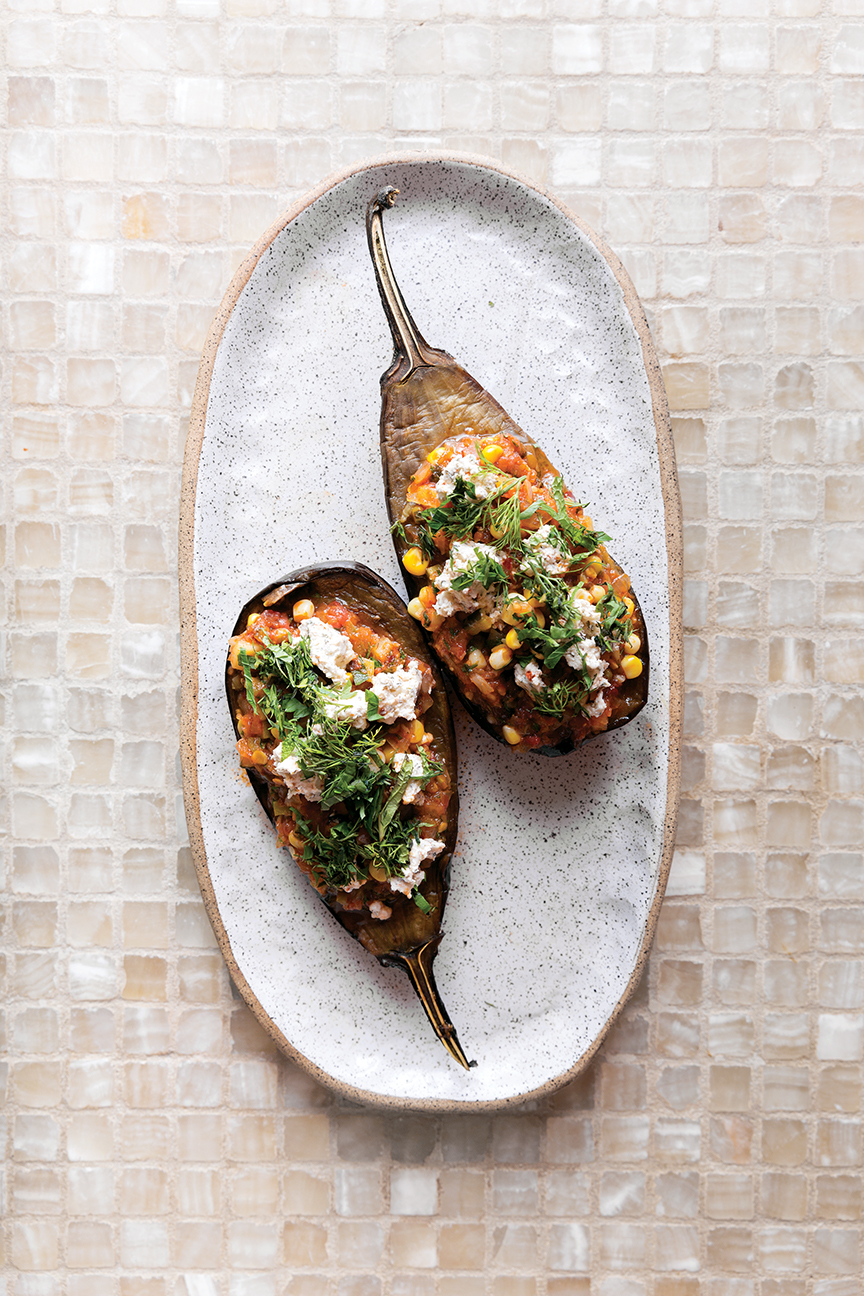
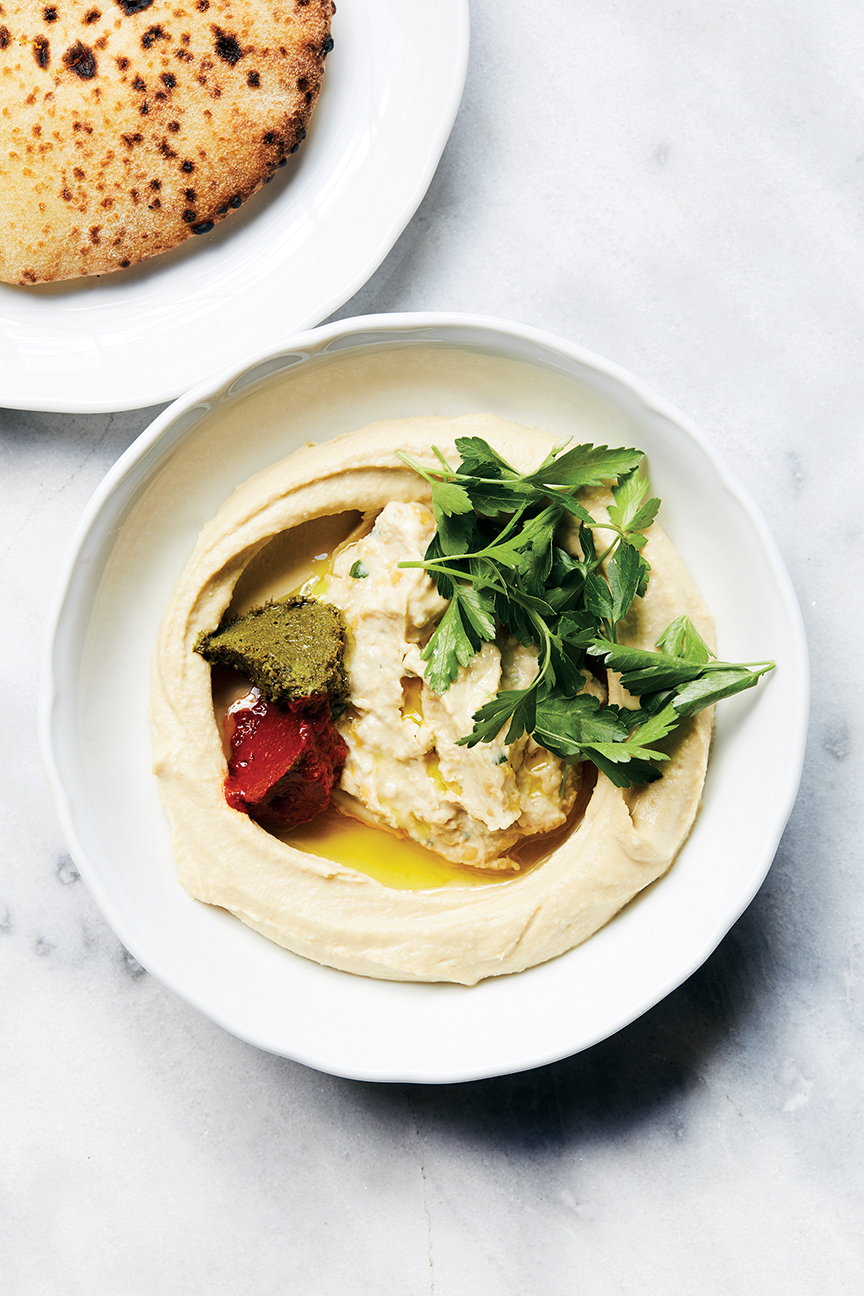
Photo by Nicole Franzen
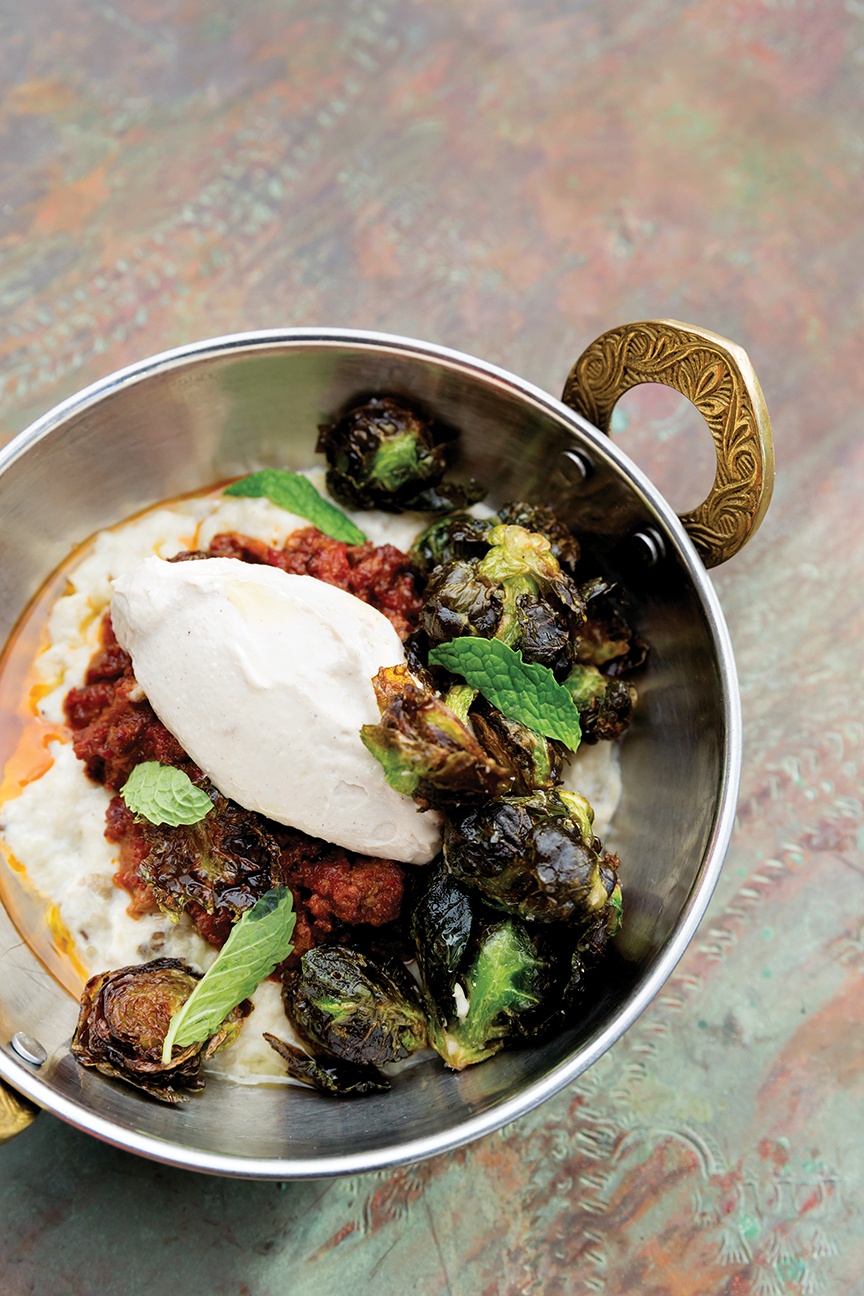
Food Photos by Kristin Teig Photography
Chef Michael Solomonov, a native Israeli who grew up in Pittsburgh, opened Zahav (“gold” in Hebrew) in Philadelphia a decade ago and has won multiple James Beard Awards for his modern Israeli cuisine. Hardly an elitist, the chef/owner is frequently found covered in flour, preparing his legendary laffa bread dough for the restaurant’s wood-burning oven. In his festive, high-ceilinged dining room, traditional lanterns hang over the bar and a photo mural of Jerusalem’s Machane Yehuda Market sets the mood.
Author of Israeli Soul and Zahav: A World of Israeli Cooking (for which he won a couple of those awards), Solomonov is pleased to introduce authentic Israeli cooking to American diners. “Zahav was our way of bringing Israeli hospitality and the soul of Israeli cooking and dining to the U.S.,” says the chef. Solomonov reports that originally the menu was very literal, concentrating on authentic Israeli dishes. “But now we’ve become more comfortable in this conduit role and the relationship that we have for being a culinary tour guide, implying Israeli food without having to copy-and-paste recipes we see over there.”
“We can’t simply call Israeli cooking ‘Middle Eastern,’” insists Solomonov, noting the diverse influences in the country, including about 100 cultures represented by Israeli residents. “We have this convergence of European, Middle Eastern and North African cuisines all happening symbiotically — that’s what makes our food Israeli,” he says.

Photo by Kristin Teig Photography
Hummus with various toppings arrives with Solomonov’s signature laffa, while other mezze include veal carpaccio with coffee-brined egg and preserved lemon, and grilled duck hearts with green garbanzos. Grilled over coals are merguez sausages, harissa-spiked hanger steak or branzino, all elevated versions of traditional dishes from Israel.
The acclaimed chef points to diversity as one of the factors contributing to the current popularity of the region’s cooking, noting that its reliance on vegetables and traditional techniques (e.g. cooking over wood) also appeal to contemporary restaurant-goers. “Diners are always looking for something new, and since there’s so much history and soul in this cuisine, I think it relates to American cooking more than people realize,” says Solomonov.
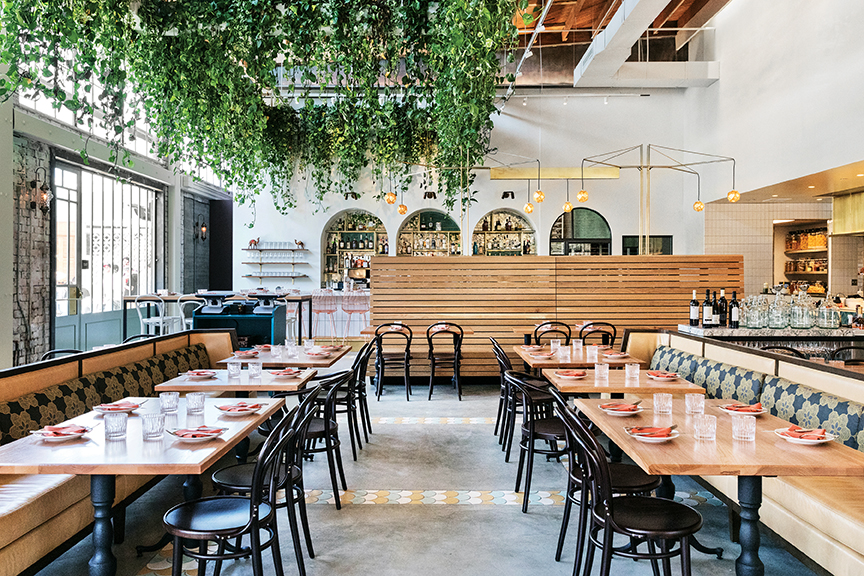
Photo by Dylan + Jeni
Bavel Los Angeles
In the Arts District in downtown Los Angeles, where crumbling factories are being transformed into chic art galleries, boutiques and bistros, young chef Ori Menashe and wife Genevieve Gergis have become prominent restaurateurs. Their first establishment, Italian-inspired Bestia, gave the Arts District culinary cred back in 2012, and this year they followed it up with Bavel, a contemporary Middle Eastern eatery.
Menashe was born in L.A., but raised in Israel, and collectively the couple also has roots in Morocco, Turkey and Egypt, so their menu at Bavel is informed by the entire region. L.A., with its large Persian and Armenian populations, is a city already accustomed to Middle Eastern cuisine, but Bavel satisfies a pent-up demand for a more sophisticated, contemporary experience. Dishes such as velvety foie gras halva, lamb tartare and grilled dorade with red charmoula delight diners.
“We always wanted to open a restaurant that showcases cuisine from our family lineage with flavors and spices we grew up with,” explains Gergis, who also serves as Bavel’s pastry chef. The couple does not believe in being limited by expectations of authenticity and is more concerned about allowing high quality ingredients to take center stage. “Everyone is always searching for authenticity, but every day in this world people are creating beautiful new works of art and delicious things to eat while only being authentic to themselves,” explains Menashe.
At Cambridge, Massachusetts’ Oleana, a mile from the Harvard campus, chef/owner Ana Sortun creates a progressive menu inspired by the cuisine of Turkey, which she fell in love with as a young chef. “The food is so rich, but nothing is heavy,” says Sortun, explaining the sophisticated use of spices in Turkish cooking is distinct from any other cuisine.
“My mission was to expand people’s perception of the Mediterranean and bring Middle Eastern cuisine into the mainstream,” says the classically trained Sortun, whose heritage is actually Norwegian. She suggests that increased travel to the region, health-consciousness and advocacy from chefs like Zahav’s Michael Solomonov are contributing to unprecedented popularity of the region’s cooking.
“I try to introduce my customers to authentic flavors, not necessarily the kind of authentic dishes I would cook if I was a native of Turkey,” says Sortun, who admits a penchant for creativity. A meal at Oleana might begin with mezze such as spinach falafel, quail kabab with a baharat spice blend, or Mediterranean deviled eggs. Larger plates include za’atar-spiced chicken with a Turkish cheese pancake or striped bass with pistachio muhammara, followed by desserts like a Turkish rendition of profiteroles.
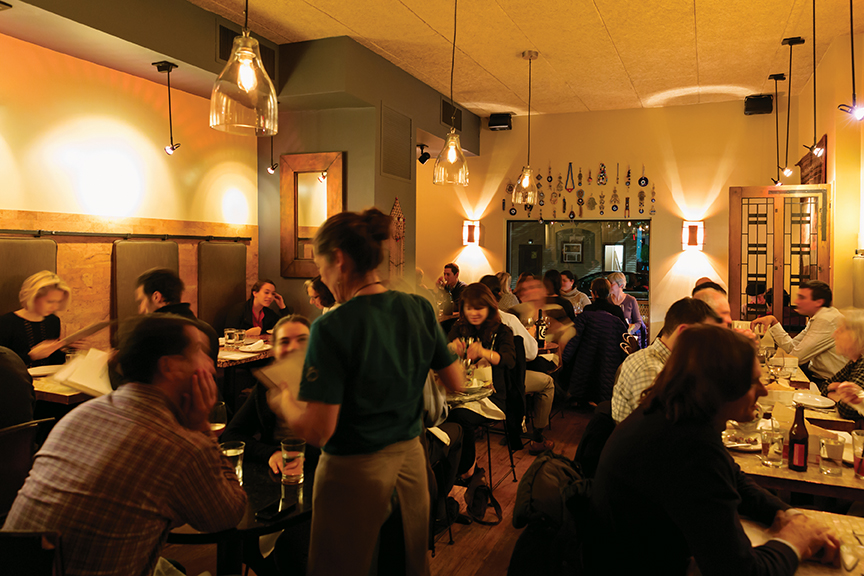
Photo by Kristin Teig Photography.
Oleana Cambridge, Massachusetts
Sortun also co-owns a casual bakery and mezze bar in Cambridge called Sofra, and Sarma in nearby Somerville where former Oleana chef Cassie Piuma presents Middle Eastern exoticism disguised as familiar American comfort foods. “We wanted Sarma to be young and accessible, with small plates and a big bar,” says Sortun, who adds, “It’s more playful, less serious than Oleana.”
Snacks at Sarma include Turkish-spiced beef jerky, brisket shawarma served taco-style, pork belly biscuit sliders layered with jalapeño-whipped feta, and a Middle Eastern riff on the iconic Philly cheesesteak. “Cassie is using language to make the cuisine at Sarma more accessible,” says Sortun, noting that expressing familiar concepts builds trust with diners.
New Orleans hardly seems the place to find exceptional Middle Eastern cuisine, but Big Easy diners are happy to take a break from gumbo and étouffée for chef Alon Shaya’s contemporary Israeli cuisine. His restaurant, Saba (“grandfather” in Hebrew), features a homey dining room and a menu that layers modern concepts over ancient traditions from the Middle East.
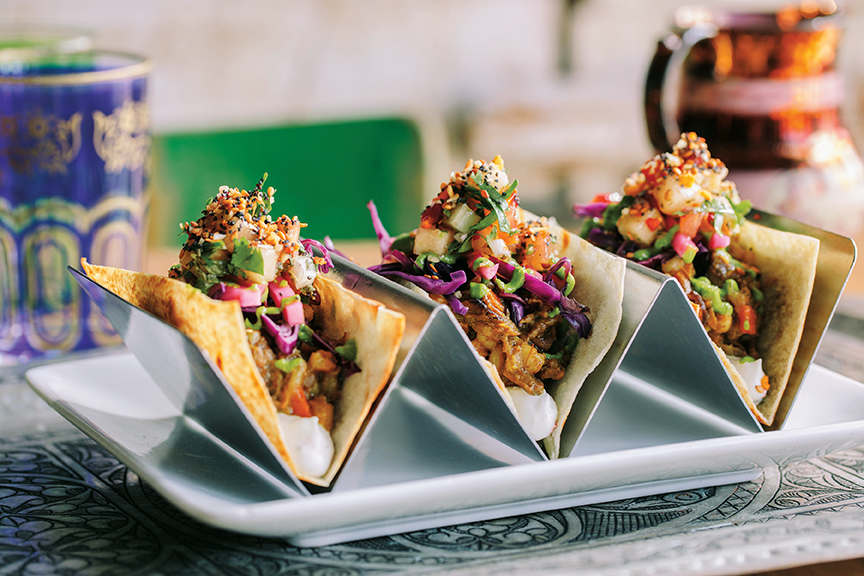
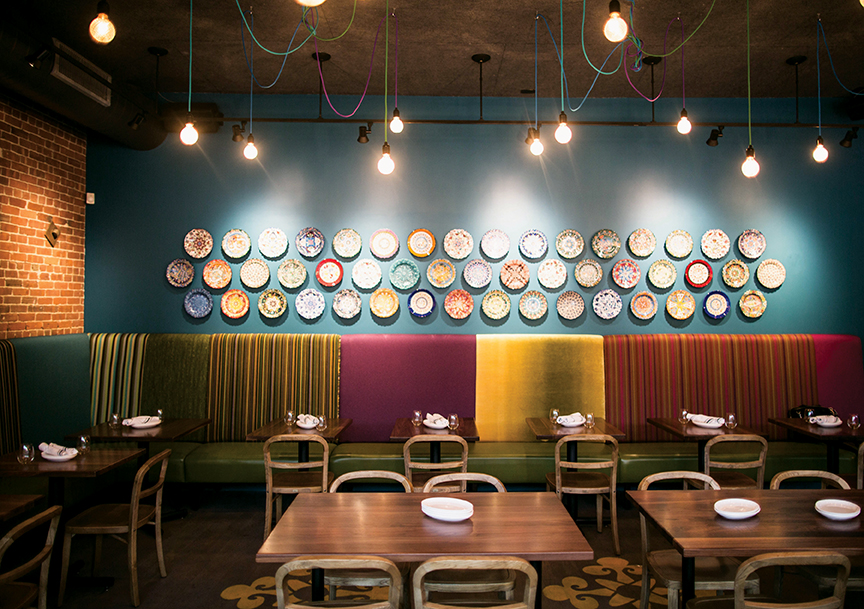
Photo by Susie Cushner.
Sarma Somerville, Massachusetts
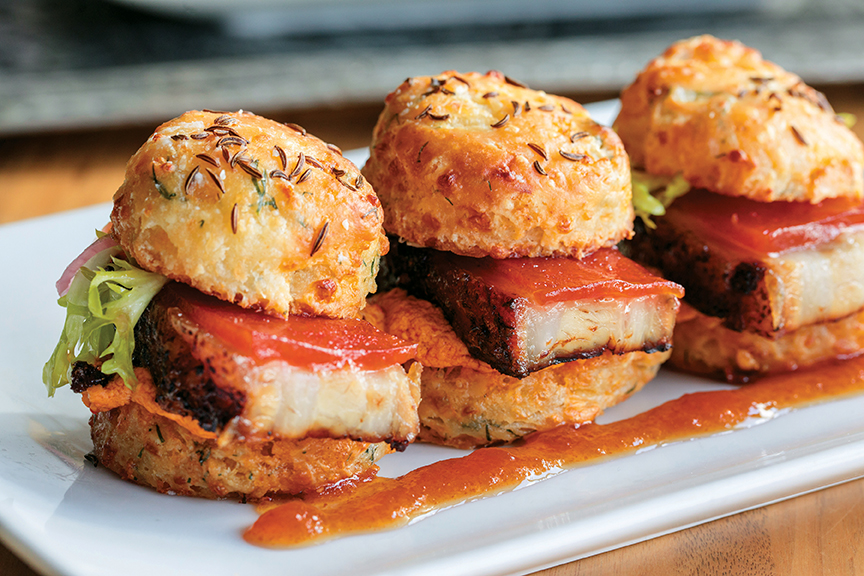
Food Photos by Brian Samuels.
At Saba, Shaya offers a selection of hummus preparations incorporating everything from spicy Brussels sprouts to blue crab, while octopus is treated with shawarma spices and foie gras is complemented with date honey and Marcona almonds. Caviar may precede family-style harissa-roasted chicken or Moroccan-inspired lamb shank pastilla.
“We don’t try to invent anything,” says Shaya, who states the restaurant’s goal is to create food that evokes memories and emotions. Concurring with Philadelphia’s Solomonov, he reports, “Israeli cuisine is different because of the immigration that occurred over the last 70 years,” with cultural influences in Israel, including Russian, Yemenite, Greek, and Moroccan. “It’s how those cuisines intermingle that make it unique,” adds the Israeli-born chef/owner.
Shaya does not necessarily subscribe to the view that Israeli and Middle Eastern cuisines are suddenly trendy. “I think it’s just good, comforting and recognizable food,” he says, adding for emphasis, “I think it’s actually anti-trendy, and that’s why so many people like it.”
Bavel Los Angeles www.baveldtla.com
Saba New Orleans www.eatwithsaba.com
Oleana Cambridge, Massachusetts www.oleanarestaurant.com
Sarma Somerville, Massachusetts www.sarmarestaurant.com
Sofia Bakery & Café Cambridge, Massachusetts www.sofiabakery.com
Zahav Philadelphia www.zahavrestaurant.com
Some designer labels have successfully expanded their style to include branded restaurants.
By Samantha Myers
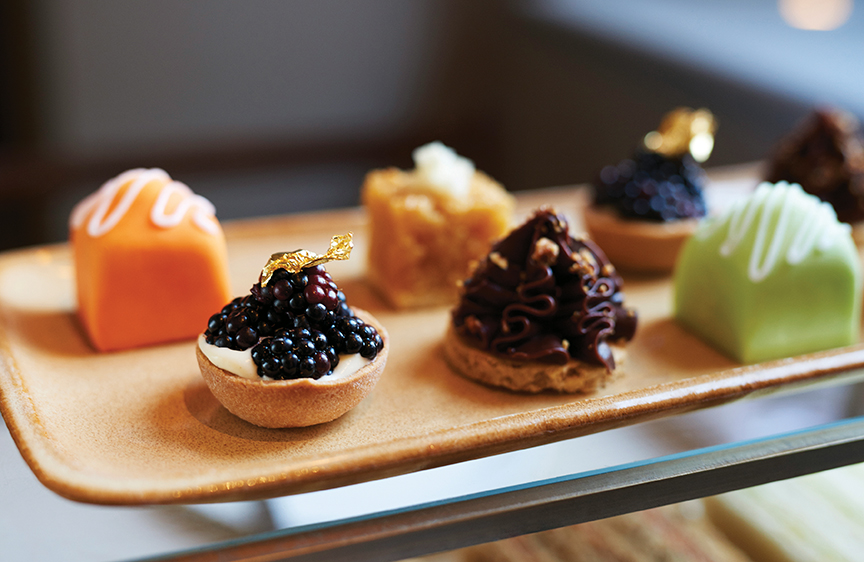
Photo courtesy Burberry
In recent years, high-end fashion houses have begun expanding their brands into fashionable food ventures, ranging from fine dining locales to cultivated cafes and refined bars.
One of the most notable fashion designers to establish contemporary food businesses as a direct extension of a signature brand is famed American designer Ralph Lauren. In 1999, Lauren opened his first restaurant, RL, adjacent to the world’s largest Polo store in Chicago. Similar to his fashion ideology, the restaurant focused on American classics — but traded in its collared Polo shirts, cashmere sweaters and neckties for steaks, seafood, chops and sandwiches.
RL, along with his subsequent restaurants, The Polo Bar in New York and Ralph’s on Boulevard Saint Germain in Paris, all have found ways to embody aspects of his iconic style.
Lauren’s newest venture is Ralph’s Coffee & Bar in London, located just next door to his flagship European store — a space that spans over 3 floors of product — on the iconic shopping stretch of Regent Street. The club-like atmosphere offers a decor that fits the designer’s equestrian aesthetic, and utilizes materials such as leather, brass and dark wood paneling.
“Ralph’s Coffee & Bar is a natural extension of the heritage of Polo and will add yet another dimension to the worlds we create,” said Lauren of the bar’s opening in January 2017. “I’ve always imagined our stores as a place for customers to experience a world. [This location] will add to that experience by offering a warm, friendly place to sit cozily with friends and family to sip a cup of our distinctive coffee or toast a special moment with one of our unique cocktails.”
Ralph’s Coffee & Bar
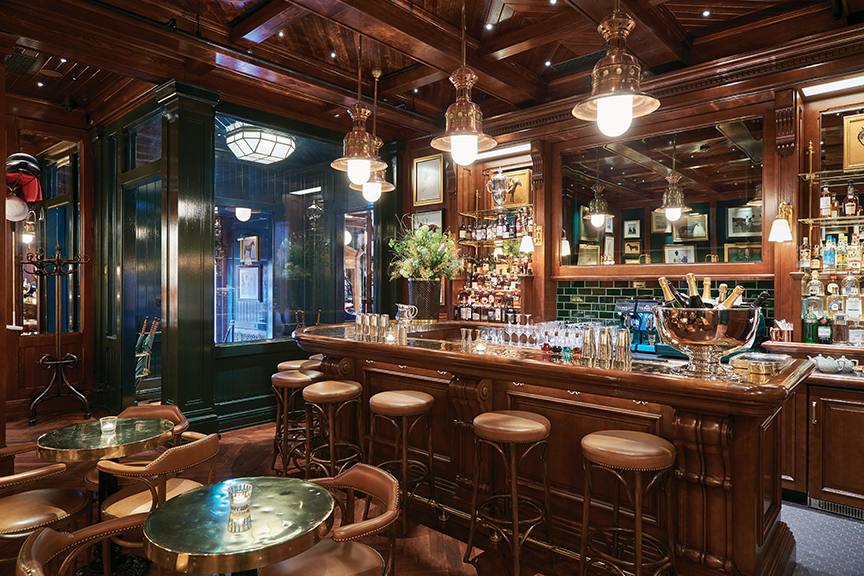
Photo courtesy Ralph Lauren
173 Regent Street
Mayfair, London W1B 4JQ
+44.(0)20.7113.7450
Jonathan Hatchman, food editor for The London Economic, believes Ralph’s Coffee & Bar meets its intent and holds up the Ralph Lauren image. “The bar completely epitomizes everything expected from Ralph Lauren: from the equestrian and polo themed accents, brass-topped bar, saddle leather seats and a palette of rich browns and bottle green,” he says.
While the menu follows suit with American classics, it has also embraced European elements. The bar sells three signature cocktails specifically created for the London location: Regent Street Sour, Ralph’s Winter Punch and Ralph’s Evening Roast.
During his visit, Hatchman indulged in the bar’s beverages and complementary snacks — especially the “ludicrously delicious” breaded and deep-fried olives. “I particularly enjoyed ‘The Chairman’ — a rye whiskey cocktail with an absinthe rinse, both typical Sazerac components and one of my favorite cocktails,” he says. “The bar’s take on an ‘Old Fashioned’ was good, too, served in a huge polo-etched glass, made with woody Eagle Rare bourbon.”
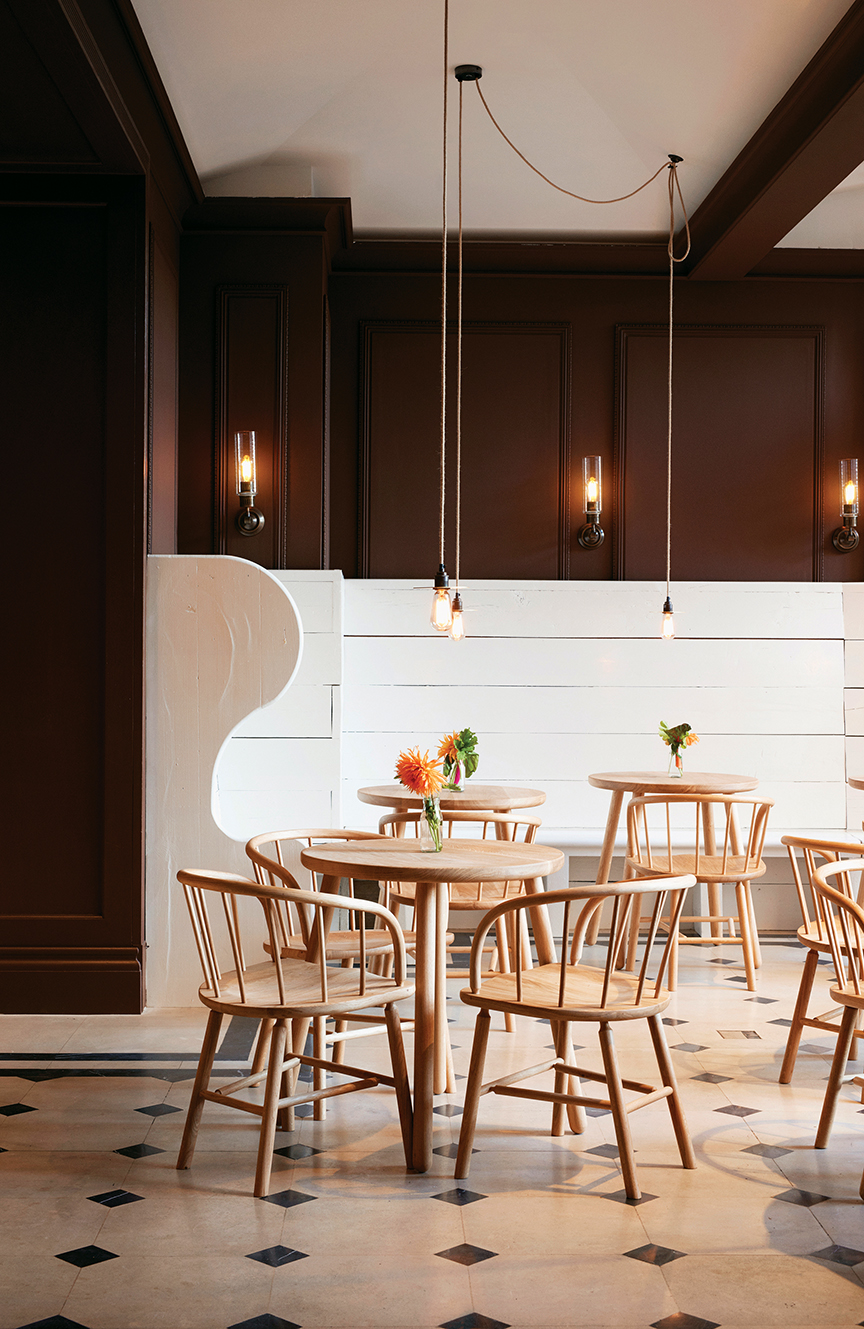
Photo courtesy Burberry
Thomas’s at Burberry Regent Street
5 Vigo Street
London W1S 3HA
+44.(0)20.3159.1410
A few minutes down Regent Street, another famed fashion brand has quite literally broadened its label into a culinary eatery. Known for its iconic trench coats and classic trademark tartan plaid, British luxury fashion house Burberry is also giving its clientele an equally posh spot to dine as their clothes have given them to wear.
Named for its founder, Thomas Burberry, Thomas’s is described as an “all-day dining destination” within the company’s flagship London store. This particular location offers a special gift area, as well as in-store monogramming services so that leather accessories and luxury goods can be embellished with one’s initials.
With a menu ranging from lobster to finger sandwiches and English cakes, Thomas’s is a sophisticated cafe for both a shopping break or a social meal. What’s better than concluding a Burberry shopping spree with a fine cup of tea and a locally sourced lunch?
“All of the produce is sourced from British small farms and artisan suppliers, while the decor is quite simple with marble-topped tables, dark-wood chairs and plenty of natural light that floods the room,” says Hatchman. “Inside, the cafe is, essentially, a continuation of the store, with friendly, unthreatened service, as expected from a high-end retail space.”
“Thomas’s is very much an extension of the store,” says Hatchman. “It would appeal most to central London shoppers — either customers of Burberry, or surrounding Regent Street shops.”
Hatchman visited the store-cafe for Breakfast at Burberry. “For me, the quality of carefully selected produce really stood out,” he says. “In terms of food, the full English breakfast is a million miles from the greasy spoon classic, but it’s a fair, refined version that doesn’t skimp on quality or on the meat. I remember the black pudding being particularly delicious.”
Yet, aside from the cafe’s quite literal connection with its store, the restaurant refrained from becoming a physical manifestation of its iconic Burberry clothes. “Thomas’s is very much an extension of the store,” says Hatchman. “It would appeal most to central London shoppers — either customers of Burberry, or surrounding Regent Street shops.”
Rather than extend its brand, Burberry has extended its store’s space into the realm of nourishment. “I wouldn’t say that the cafe is a complete embodiment of the brand’s style,” he says. “But — like Burberry — the cafe is staunchly British and proud.”
www.JonathanHatchman.com
info@JonathanHatchman.com
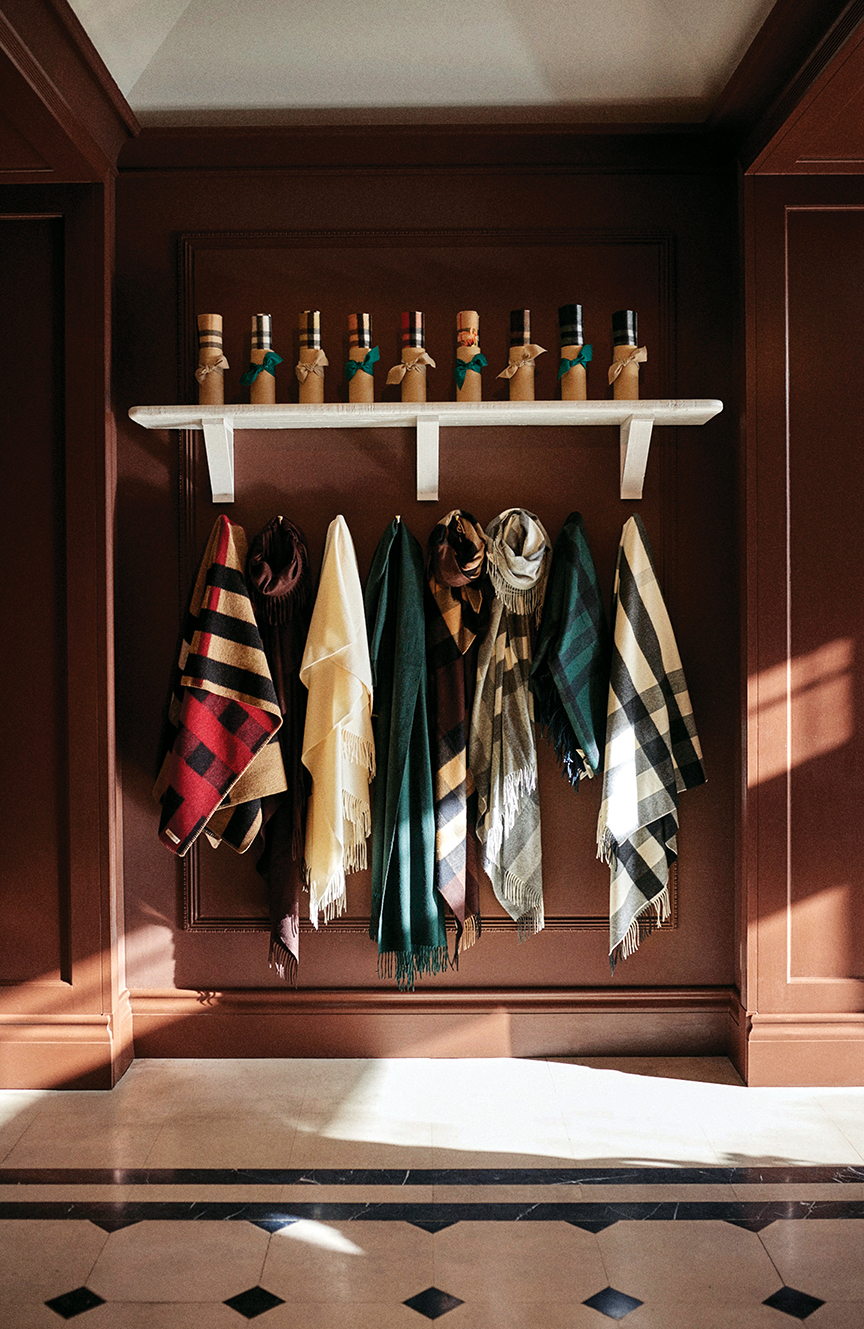
Photo courtesy Burberry
Armani / Ristorante 5th Avenue
While Ralph Lauren and Burberry have effectively incorporated restaurants into their brand’s empire, others have been unsuccessful, with their restaurants disappearing quickly after the initial buzz diminished. Take Marc Jacobs Café in Milan or Cavalli Miami Restaurant & Lounge.
Armani, however, has not had a problem.
Across the sea, immersed in the heart of Manhattan overlooking New York’s own shopping stretch — 5th Avenue — is Armani/Ristorante, one of the slew of restaurants bearing the name of the Italian mega-designer. You don’t have to travel far to find a Giorgio Armani restaurant venture — Armani Restaurants have been steadily popping up across the Americas, Europe and Asia for years, and now have over a dozen locations.
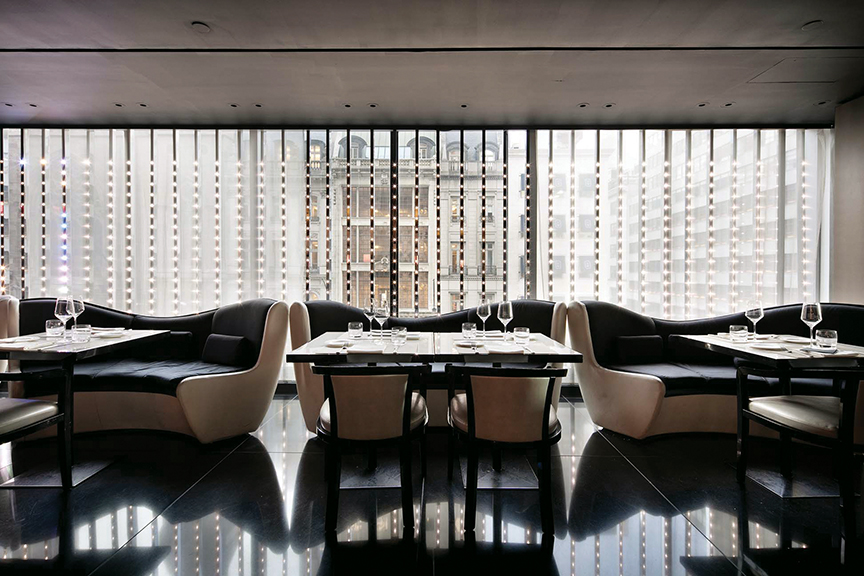
Photo courtesy Giorgio Armani
717 5th Avenue
3rd Floor
New York, NY 10175
212.207.1902
This particular Armani restaurant can be found on the third level of the Armani/5th Avenue store. Designed by Fuksas, the heart of the building is the sculptural steel staircase that leads customers to and from Armani-curated shopping and dining. The restaurant incorporates an Italian-inspired trendy style through a commanding backdrop of black and white, sleek curves and straight lines and furbished LED lights that give it the edge it needs.
Armani/Ristorante is structured in true Italian fashion — antipasti, primi piatti, secondi, and also offers breakfast and lunch, most likely for visitors to its bustling store.
Although epitomizing Armani’s sleek, hard-edged style, Armani restaurants are beyond a re-creation of his style in restaurant format. In fact, his locations have bolstered into culinary expeditions and have seen partnerships with some of the world’s top chefs, such as Milan’s Armani/Nobu, where he created a restaurant with celebrity chef Nobu Matsuhisa. The polished restaurant is unmistakably Armani, yet has a warm Japanese influence in both the design details and of course, the food.
American chefs appreciate French tradition, but are increasingly inspired by ethnic communities in their own backyards.
By Roger Grody
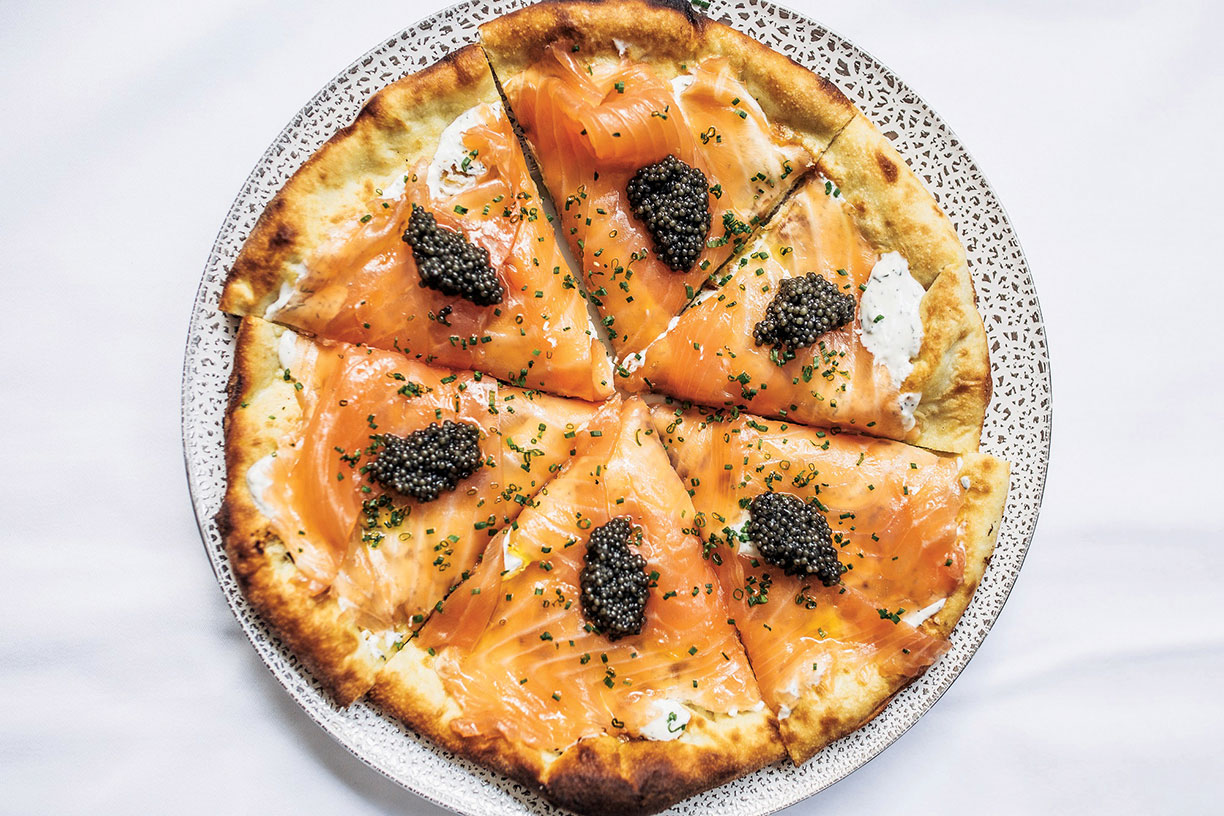
Photo courtesy Antonio Diaz
There was a time when young chefs in America were primarily influenced by French masters like Paul Bocuse or Joël Robuchon. While classic technique remains important, eclectic global flavors have become equally influential. Conveniently, chefs no longer need to travel the world to discover exotic fare, because it is simmering in the diverse ethnic neighborhoods of most American cities.
The practice of incorporating ethnic elements into familiar dishes used to be referred to as “fusion,” a term that has fallen out of favor with contemporary chefs, and today’s cross-cultural combinations are more nuanced and less frivolous than in the 1980s. Today, chefs tend to use local ethnic cuisines as accents or pay tribute to their own families’ immigrant roots. The presence of Middle Eastern falafel on a French menu or a dusting of Japanese togarashi seasoning on potatoes at an all-American steakhouse does not compromise the integrity of their respective cuisines, but certainly makes them more interesting.
A master of infusing local ethnic flavors into his dishes is celebrity chef José Andrés, who borrows Latin American and Asian elements at The Bazaar by José Andrés in Los Angeles. In multicultural Miami, he incorporates Caribbean elements into his menu at The Bazaar South Beach. Given his own Spanish heritage, incredible versatility and expertise with complex molecular gastronomy techniques, most Andrés menus feature some unusual culinary mashups.
At South Beach, Andrés honors the local Cuban community with colada Cubana, a play on Cuban coffee turbocharged with foie gras, and pollo al ajillo (garlic chicken) slow-cooked with black garlic. As a tribute to South Florida’s Jewish community — largely comprised of transplanted New Yorkers — the chef offers a clever riff on bagels and lox: dill cream cheese-filled bagel cones topped with salmon roe. And for dessert, Andrés playfully deconstructs another local specialty, Key lime pie.
Bazaar South Beach chef de cuisine Tito Vargas, a native of Puerto Rico, says he and Andrés draw inspiration from a wide variety of Latin American and Caribbean cultures. “It’s important that I keep true to José’s vision, showcasing the main ingredient and transforming it without sacrificing the flavor and integrity of the product,” he says. Vargas notes that even when applying high-tech culinary tricks, the essence of a dish is respected and preserved. “In no way, shape or form does it look like a Cuban sandwich, but when you bite into it you get all the flavors that compose a Cuban sandwich in a more fun, inventive way,” says the chef of The Bazaar’s molecular gastronomic version.
Despite Los Angeles’ reputation as a bland, immense swath of suburbia, its location — on both the Pacific Rim and threshold to Latin America — ensures diverse ethnic communities that constantly fuel the imagination of local chefs. In L.A., where California Cuisine has morphed into a more global fare, crossing culinary borders is almost routine. At Wolfgang Puck’s celebrity-favored Spago in Beverly Hills, for instance, the menu includes elements from nearly a dozen cuisines.
Bryant Ng was trained in classic French cuisine — he cooked with celebrated chef Daniel Boulud in New York — but at his own restaurant, Cassia in Santa Monica, California, he cooks French brasserie fare with an ethnic twist. At first glance, Cassia’s menu looks like it was borrowed from a Parisian brasserie, but the young chef tweaks traditional dishes with accents from his father’s Singaporean roots and his wife’s Vietnamese heritage.
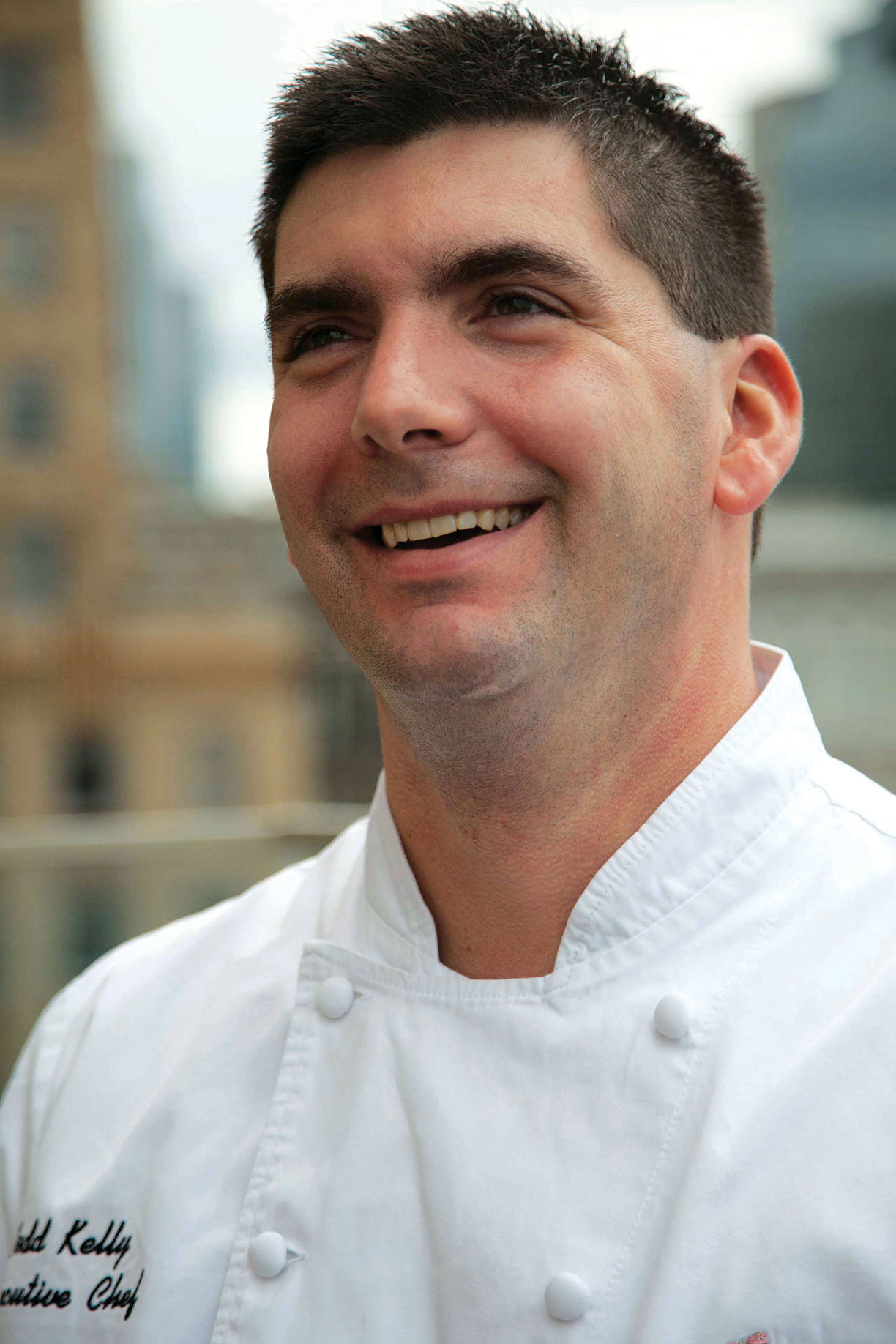
Todd Kelly
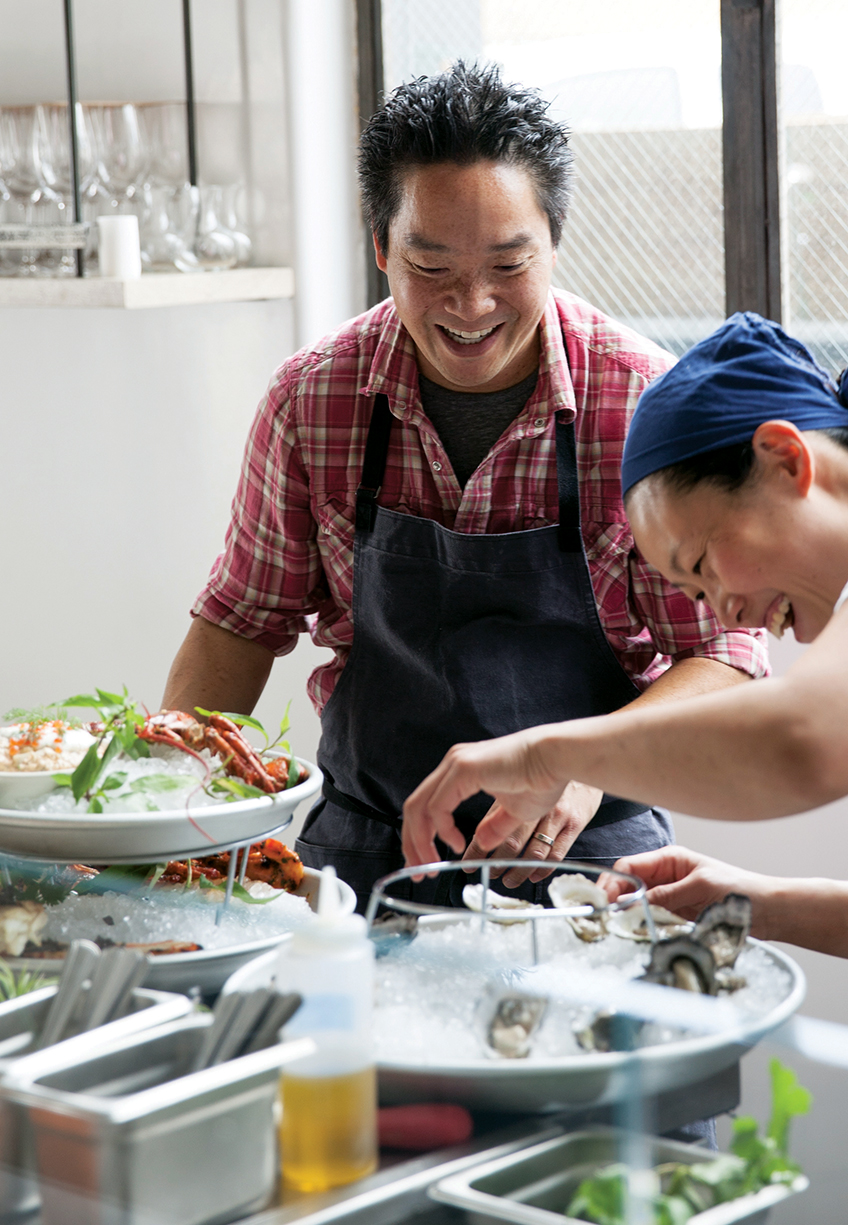
Bryant Nig
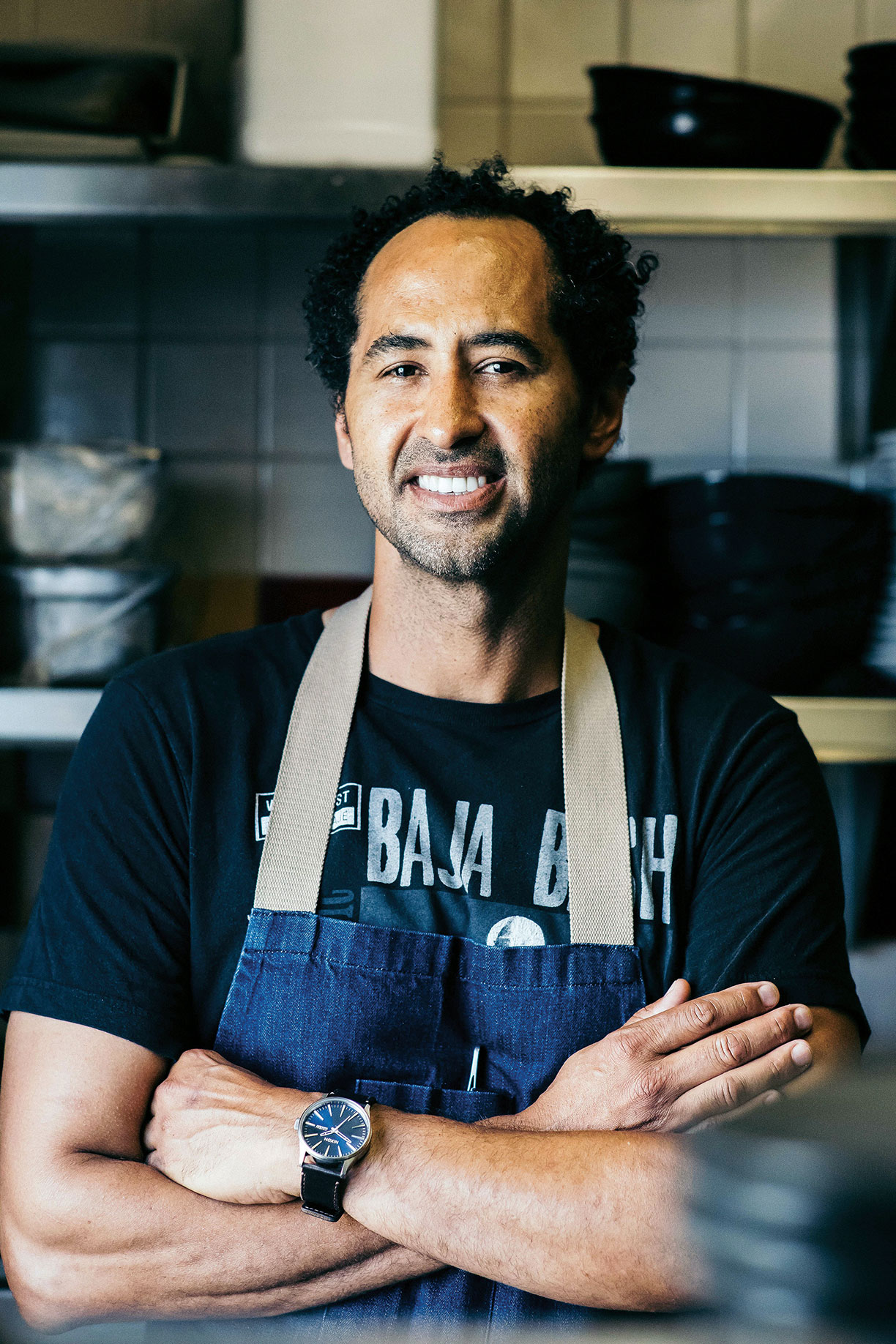
Jason Nibb
Ng’s charcuterie platter includes items like Singaporean candied pork and Vietnamese meatloaf, while escargots are scented with lemongrass. Cassia’s take on the French comfort dish of pot-au-feu has a pho-inspired broth and the bistro staple of steak frites is bathed in a Phú Quôc Island peppercorn sauce. Kaya toast, a signature of Singapore’s street vendors, is not likely to be found in a 14th arrondissement brasserie, but is a specialty at Cassia.
“It’s a very personal menu because it combines the food of my heritage, but also has influences from my professional experiences,” explains Ng. “Understanding the ‘soul’ of a cuisine is the greatest challenge,” says the chef, who dismisses the practice of simply adding a single indigenous ingredient. “Trying to incorporate multiple culinary influences requires a lot of self-editing and discipline,” adds Ng, who believes any composition must respect the referenced cultures.
Anita Lo is one of New York’s most honored chefs and her restaurant Annisa is a reflection of the diverse influences inherent in contemporary American cuisine. A second-generation Chinese-American, Lo’s passion for food can be traced to Paris, where she first fell in love with the art of cooking. She polished her skills in revered French kitchens and classic technique has always been essential to her approach.
At her Manhattan restaurant, those French sensibilities are applied to some ingredients from her own family’s heritage, as well as other global influences discovered in New York’s rich patchwork of ethnic neighborhoods. Since Annisa’s opening in 2000, Chinese dumplings filled with foie gras mousse and jicama have been one of Lo’s signature dishes. A Chinese-French mashup way too cool to be called “fusion,” the dumplings are topped with seared foie gras and a beguiling black vinegar reduction.
At Orchids at Palm Court, an opulent dining room in the Art Deco Hilton Cincinnati Netherland Plaza, executive chef Todd Kelly is contributing to getting the food scene of the Midwest — a region often neglected outside of Chicago — noticed. As a boy, the native New Yorker lived in Mauritius, an island in the Indian Ocean near Madagascar, and that experience, as well as the chef’s naturally curious palate, results in a menu with eclectic influences.
Kelly’s cuisine, built on a solid classical foundation, is laced with intriguing ingredients like Buddha’s hand, lemongrass, paneer, and sudachi. He is adept at making familiar preparations suddenly exciting without excessively altering their essence. For example, a dash of harissa (a spicy North African chili paste) gives a dish of white asparagus with traditional French velouté sauce some zing, while red snapper en papillote, a characteristically South of France preparation, receives an exotic Indian accent with vadouvan curry.
“I like to pull in flavors from my past or things I really crave,” says Kelly, noting that the cultural melting pot of Mauritius and ethnic neighbors on Long Island both contributed to his culinary wanderlust. Recently, the chef has been experimenting with Indian ingredients like nigella, fenugreek and mango powder, insisting they need not distract from the classical roots of a recipe. “The lesson is all about balance and learning that sometimes it’s the simplicity and restraint that controls a dish,” says Kelly.
In La Jolla, San Diego’s chic oceanfront district, executive chef Jason Knibb is known for his molecular gastronomy and globetrotting flavors at Nine-Ten Restaurant & Bar, which celebrates the Golden State’s finest seasonal ingredients. His Jamaican heritage may account for the jerk-seasoned pork belly on the chef’s menu, but his ethnic influences also extend to Latin American, Japanese and Middle Eastern traditions.
“San Diego is a tapestry of rich ethnic diversity, and the local food scene is no exception,” says Knibb. “There are so many chefs who have come to town from other regions bringing their own ethnic influences,” he adds, and makes a point to experience their cuisines firsthand. As a young chef in San Francisco, Knibb lived next door to a quick-service Mediterranean restaurant, and says, “They had some of the best falafels I’ve ever had … I still crave them today.” That unpretentious Mission District eatery was the inspiration for Nine-Ten’s spice-roasted carrots and carrot falafel with harissa yogurt and carrot hummus.
The recently announced James Beard Awards — the Oscars of the restaurant business — reflect a renewed respect for ethnic inspirations. The big winners were Israeli-American chef Michael Solomonov of Philadelphia’s Zahav and Chicago’s Topolobampo, where celebrity chef/restaurateur Rick Bayless is energized by his frequent travels to Mexico.
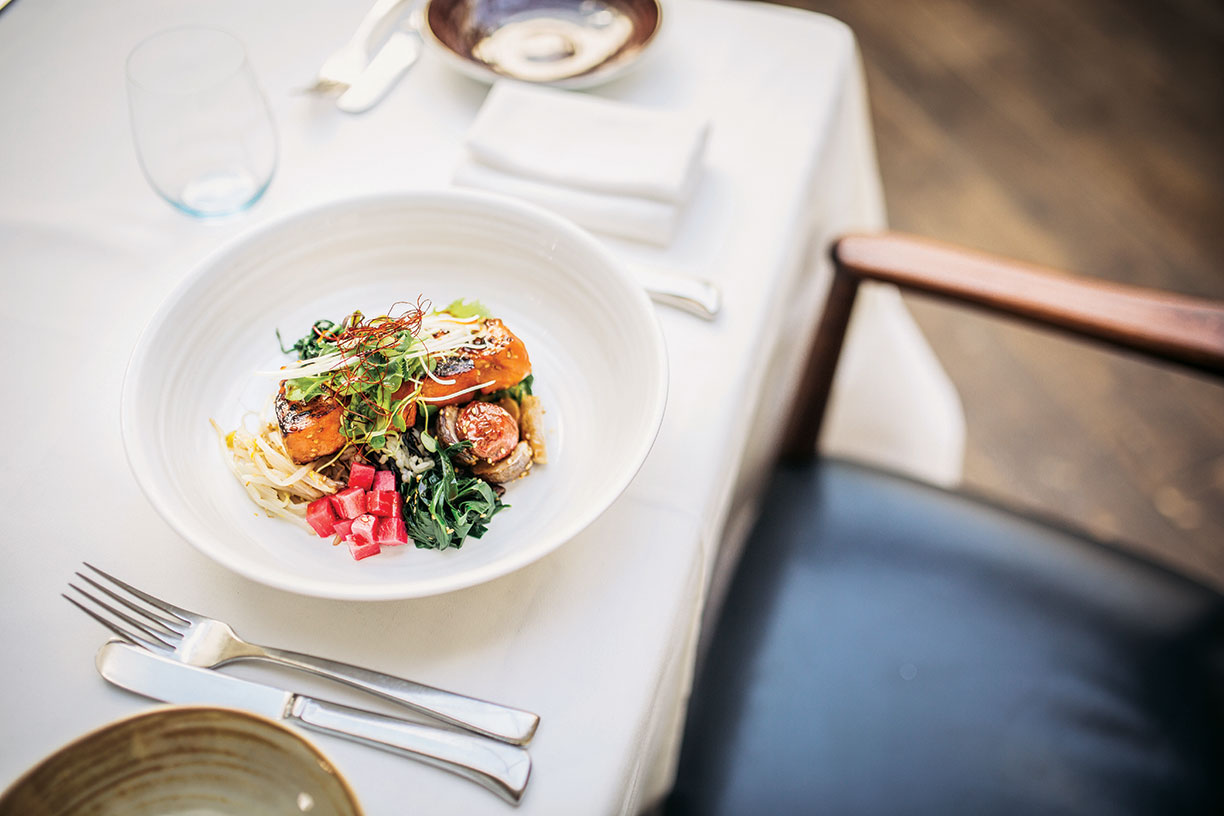
Photo courtesy Antonio Diaz
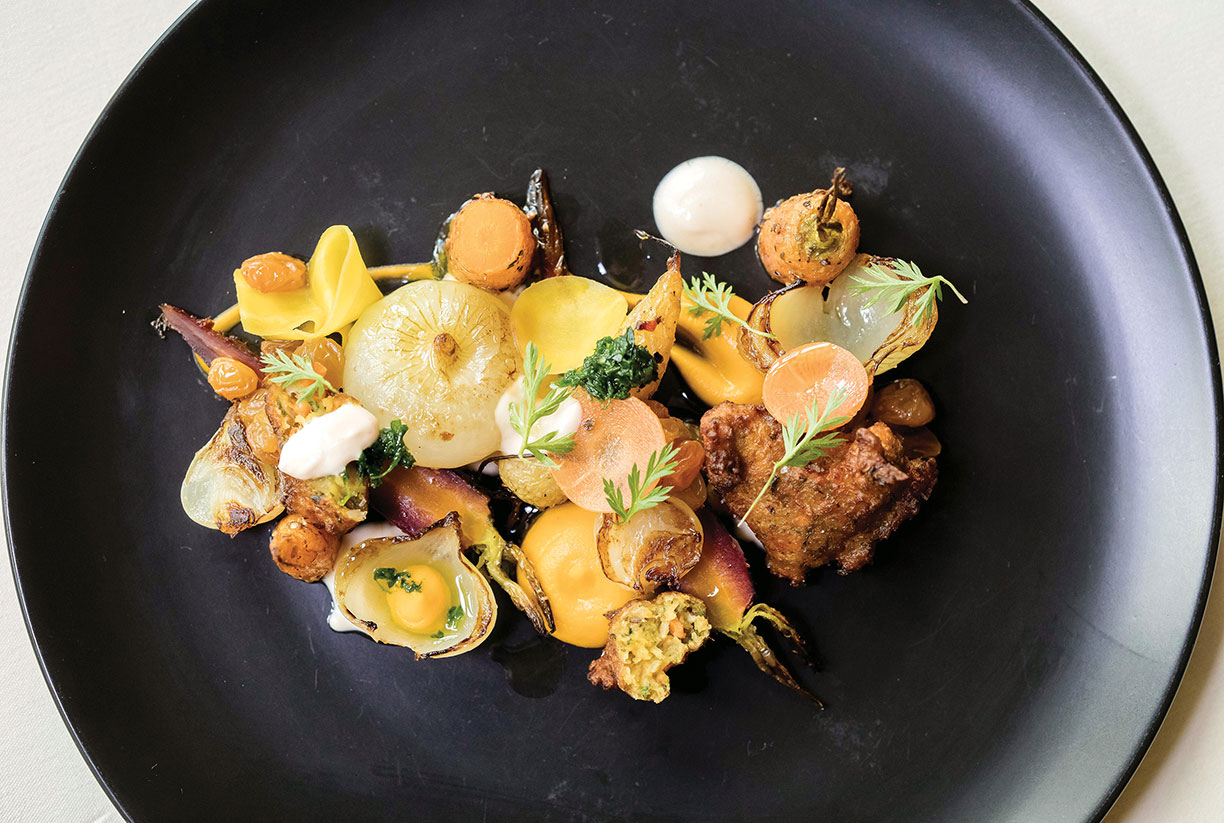
Photo courtesy Jason Knibb
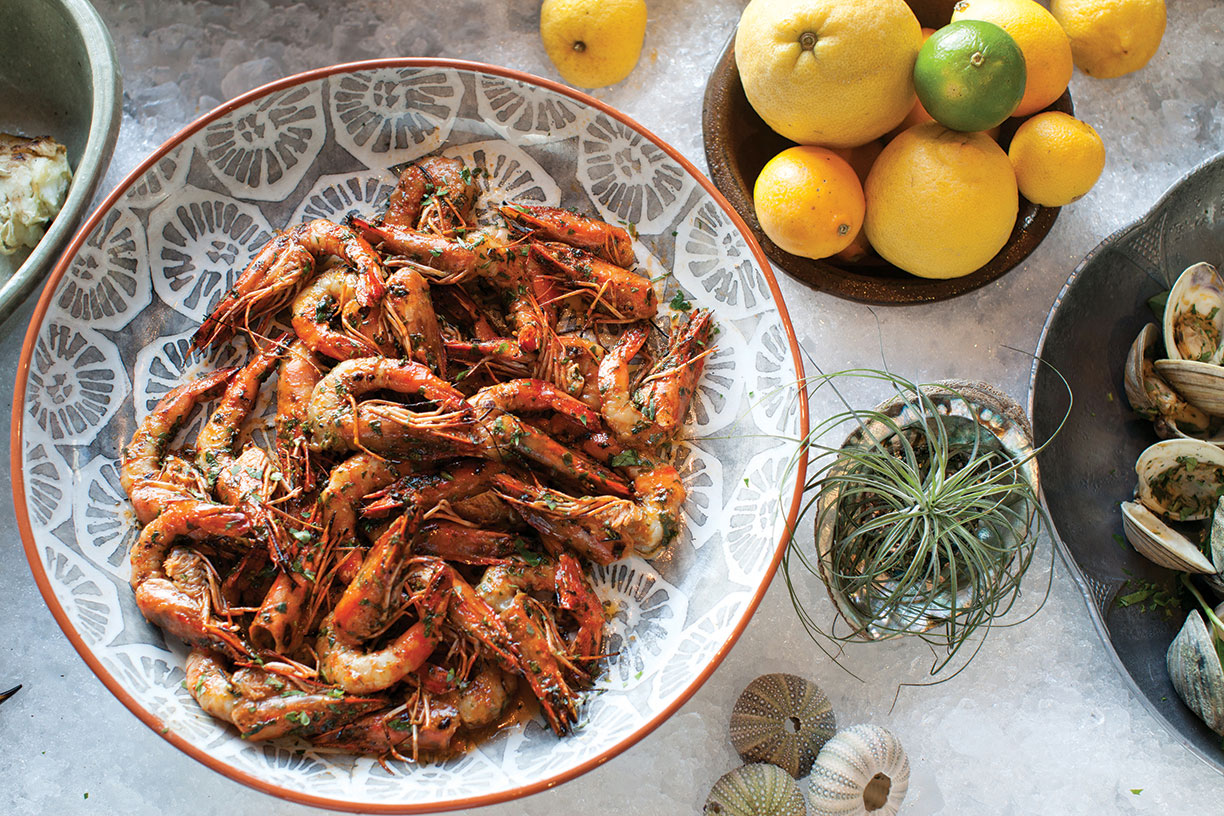
Photo courtesy Rick Poon
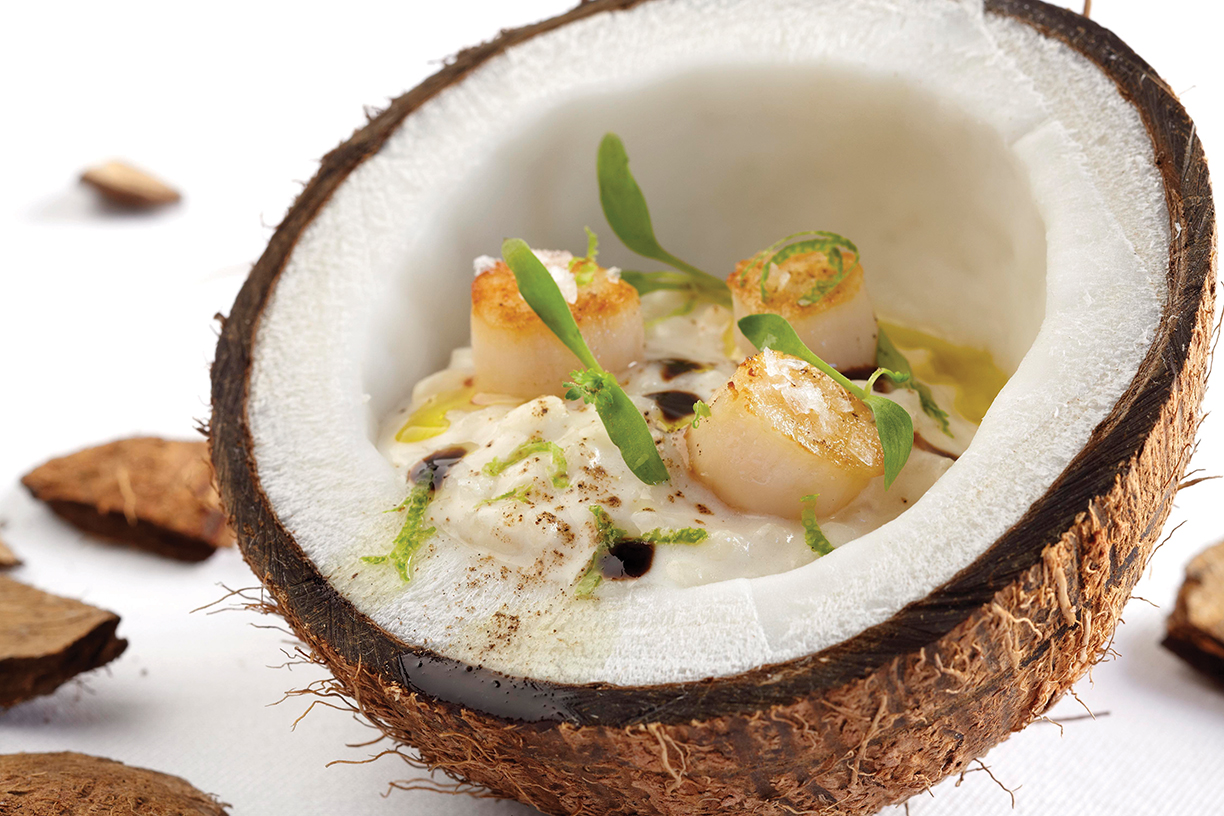
Photo courtesy Greg Powers Photography
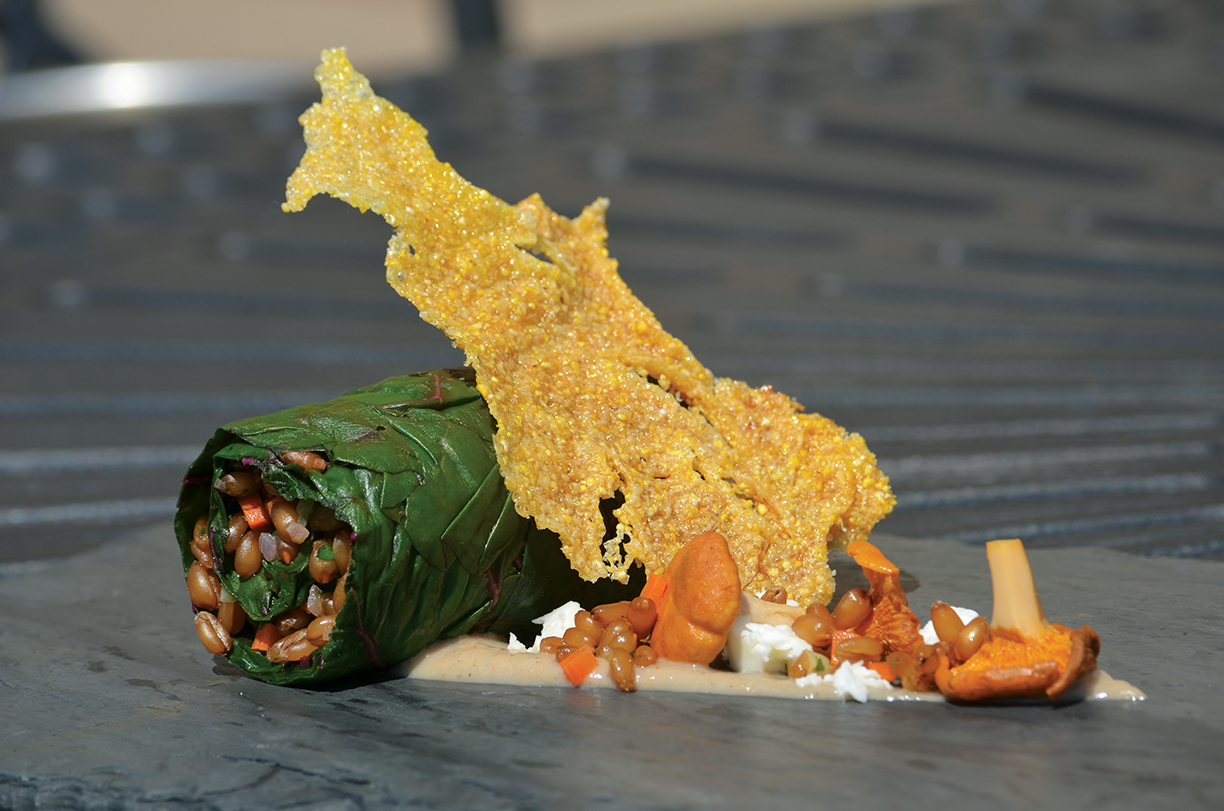
Photo courtesy Todd Kelly
Global Influences
Annisa, New York; www.annisarestaurant.com
The Bazaar by José Andrés, Los Angeles; www.sbe.com
The Bazaar by José Andrés South Beach; www.sbe.com
Cassia, Santa Monica; www.cassiala.com
Orchids at the Palm Court, Cincinnati; www.orchidsatpalmcourt.com
Nine-Ten Restaurant & Bar, San Diego; www.nine-ten.com
Spago, Beverly Hills; www.wolfgangpuck.com
Topolobambpo, Chicago; www.rickbayless.com
Zahav, Philadelphia; www.zahavrestaurant.com
The classic American steakhouse— where an abundance of white linen, polished mahogany and brass create a comforting, masculine ambiance — is today more nostalgia than reality. Contemporary steakhouses now dominate the genre, where in addition to sleek modern décor, slabs of USDA Prime are being traded in for petite cuts of Japanese wagyu beef priced like jewelry.
The steakhouse, a quintessentially American dining tradition, continues a robust renaissance that began more than a decade ago. The classics — places like Sparks, and Smith & Wollensky in New York City or Gibsons in Chicago — remain popular, but talented young chefs are reinterpreting the venerable institution for a more sophisticated, diverse clientele. The traditional ribeye is still on the menu, but the days of pairing it with a baked potato and creamed spinach are fading in favor of caviar, truffles and some molecular gastronomic magic.
One of the first steakhouses to break with tradition and introduce diners to a new wave of contemporary beef palaces was Beverly Hills’ CUT, the Wolfgang Puck concept that has since been replicated in Las Vegas, New York, Singapore, London, and even Bahrain. The original Beverly Hills dining room, an über-sleek space incongruously carved out of the ornate, Italian Renaissance-style Beverly Wilshire Hotel, broke all the rules.
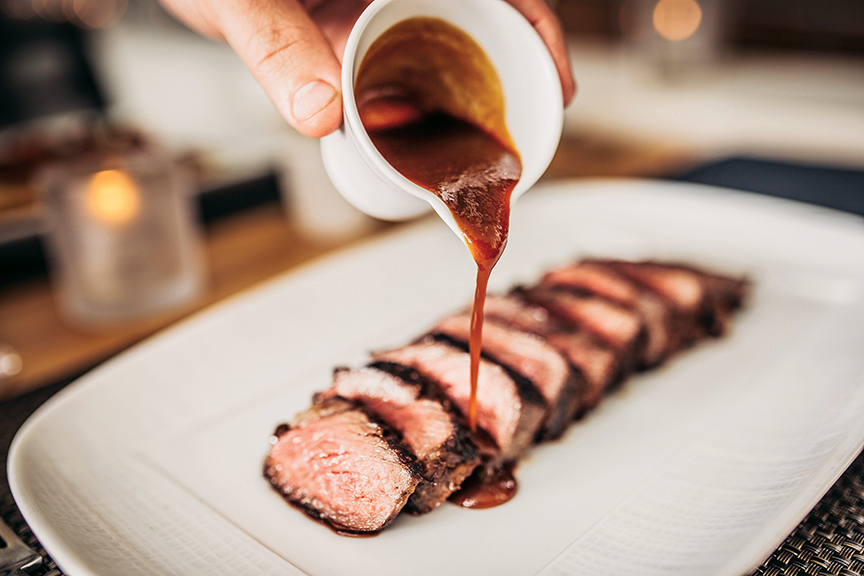
When CUT debuted a decade ago, it was a bold departure from the traditional steakhouse, from the cutting-edge aesthetic by famed modernist architect Richard Meier to a menu that included beef from around the globe and subtle Pacific Rim influences. Unlike the traditional chophouses, it did not ooze testosterone, and tables were just as likely to accommodate svelte models as button-down businessmen. CUT was among the first mainstream steakhouses to offer genuine Kobe beef, so heavily marbled from a pampered existence that just a few ounces satisfy.
“Our chefs are constantly challenging themselves, using ingredients and techniques that most steakhouses would never think to implement,” says Head Chef Ari Rosenson. While that may be reflected in dishes like bone marrow flan and maple-glazed pork belly with sesame-orange dressing, the chef points out that familiar items like creamed spinach, Kennebec fries and tempura onion rings are among the most popular sides. “We continue to evolve, creating experiences that are tailored to our guests, while also keeping it playful, unpredictable and true to our brand,” states Rosenson.
In Northern California, Alexander’s Steakhouse has emerged as a counterpoint to old school chophouses like San Francisco’s John’s Grill and Alfred’s. According to Vice President of Operations Josh Rousseu, the layering of innovative Pacific Rim influences over the traditional steakhouse template is driven by changing demographics, partially due to the region’s tech boom. “The inspiration for Alexander’s was rooted in the love and popularity of the classic American steakhouse, but elevated by Asian influences, ingredients and techniques to create a meld between the comfortable, accessible familiarity and unexpected surprises,” explains Rousseu.
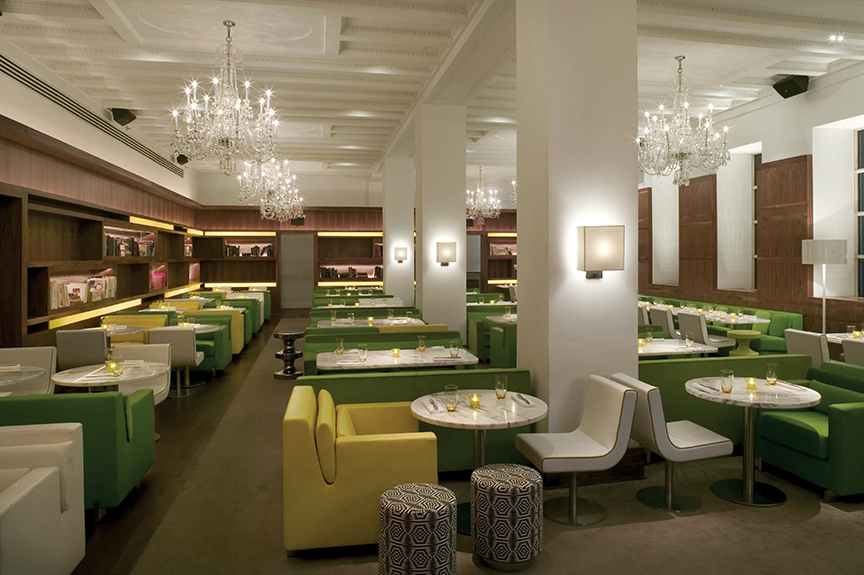
After launching in the Silicon Valley, Alexander’s next took over a former ware-house in San Francisco’s South of Market (SoMa) district, transforming it into a chic, contemporary space. Loyalists of old school steakhouses may be disappointed at the absence of an iceberg lettuce wedge or shrimp cocktail, but uni-oxtail toast and cured foie gras with blackberry honey and elderflower introduce sophisticated Japanese and French influences.
Steaks representing a wide array of appellations are offered at Alexander’s, from the American Heartland’s Black Angus to the “snow beef” wagyu raised in Hokkaido (Japan’s northernmost island), where cattle eat voraciously to combat frigid temperatures. Although most imported wagyu is incredibly rich and requires minimal seasoning, a selection of six exotic salts are provided.
Not all prized beef is from the Pacific Rim, and Long Beach, California’s Chianina is named after a legendary breed of cattle that Italians insist rivals the best of Japan or the American Midwest. For an opening act, diners may select from beef tartare, pork belly or roasted bone marrow with onion marmalade. The cuts of Chianina include bone-in ribeye, bone-in New York or bistecca alla fiorentina, and prestigious Piedmontese beef is also offered. The restaurant, a modern, approachable environment, features a strong wine program that is naturally deep in Italian reds but global in scope.
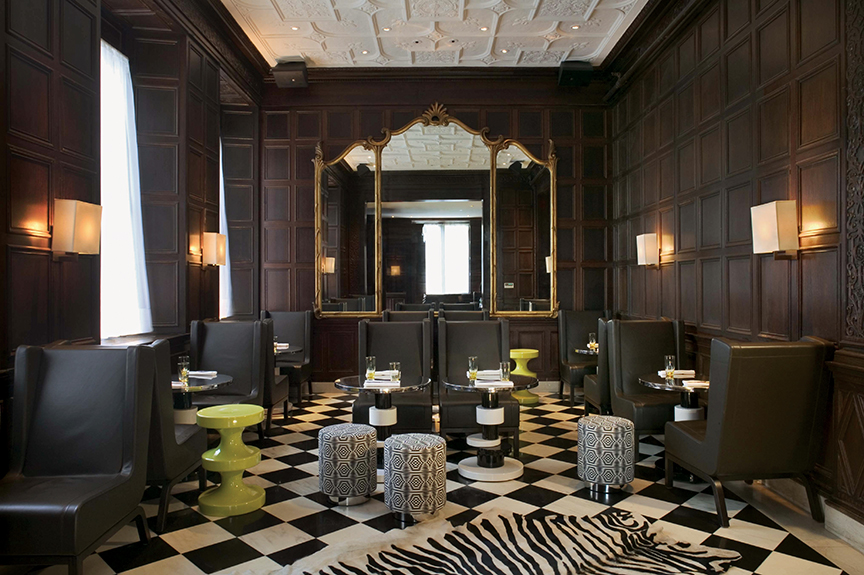
Prolific restaurateur Stephen Starr maintains a portfolio of about 30 diverse restaurants in the Northeast and Florida, including those of celebrity chefs Masaharu Morimoto and Douglas Rodriguez. Philadelphia’s Barclay Prime, with its chic, colorful décor — Baccarat crystal chandeliers are concessions to its historic Rittenhouse Square building — and contemporary soundtrack, has been called the “anti-steakhouse steakhouse.”
Executive Chef Mark Twersky’s menu includes some fun, whimsical items in addition to the requisite filet mignon and porterhouse, such as a monstrous 50-ounce tomahawk ribeye from Pennsylvania’s Baer Country Farm and Barclay Prime’s elevated riff on the iconic Philly cheesesteak. The $120 sandwich, which includes a half-bottle of Perrier-Jouët Champagne, is crafted from Japanese wagyu ribeye, foie gras and truffled Cheez Whiz. General Manager Tom Austin reports, “We’re filled with tradition and history in our own right, but stand in stark contrast to the old school classic steakhouse.”
Las Vegas has arguably become the steakhouse capital of America, with favorites from the Big Apple, Windy City and Lone Star State represented, as well as beef palaces created by celebrity chefs Mario Batali, Gordon Ramsay, and Jean-Georges Vongerichten. Top Chef star Tom Colicchio operates two steakhouses on the Strip: Heritage Steak, where beef from around the globe is grilled over an open flame, and Craftsteak, a sophisticated bastion of premium beef from the Heartland and Japan.
Colicchio is not one to overthink his cuisine. “My goal at Craftsteak is to find remarkable ingredients and cook in a way that preserves their integrity,” he says, adding, “It’s an amazingly simple idea.”
His Craftsteak menu includes braised, grilled and roasted cuts of beef, from USDA Prime to wagyu designated A5, the highest grade applied to the finest beef from Japan, complemented by a wine list filled with legendary (and stratospherically priced) vintages from Bordeaux. General Manager Christopher Goss reports the restaurant’s large menu offers opportunities for sharing and customizing. Despite the high prices, he insists, “We’re approachable to everyone, and while the cuisine may be an art, it’s not too highbrow and stands the test of time.”
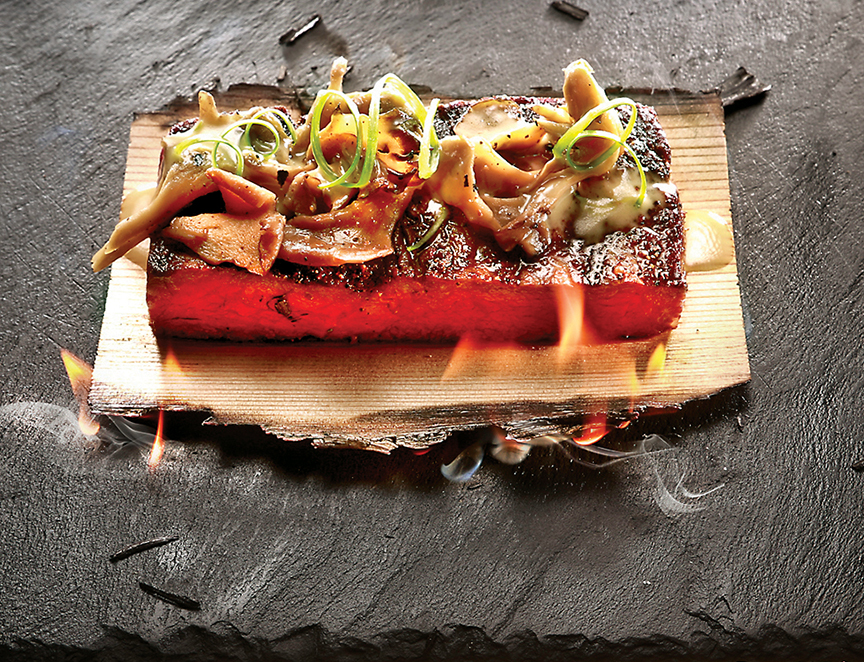
José Andrés, the Spanish-born celebrity chef who dominates the Washington, D.C., food scene, has stepped into the steakhouse arena at the trendy SLS Las Vegas. At his Bazaar Meat, he shows off some of the molecular gastronomic innovations he is famous for — tricks learned from his mentor, Spain’s pioneering chef Ferran Adrià — but he also respects the traditions of the American steakhouse.
In a chic environment created by groundbreaking designer Philippe Starck, Bazaar Meat is a modern, fanciful take on the traditional hunting lodge. Diners begin with Andrés signatures like foie gras cotton candy, otherworldly spherified olives and (literally) smoking liquid nitrogen cocktails, all reminders this ain’t your granddad’s steakhouse. Appetizers like beef tartare or bison carpaccio tacos reflect the meat-centric spirit, but the restaurant also offers an impressive raw bar from which oysters, sea urchin and live scallops are dispensed. And for high rollers, flights of caviar from around the globe can be paired with world-class Champagnes.
The steaks at Bazaar Meat include A5 Kobe from Japan’s Hyogo prefecture listed at $50 per ounce, prices equivalent to French black truffles. It is, however, worth noting that a few ounces of this ultra-rich, melt-on-your-tongue beef goes a long way and is best reserved for special occasions. Representing more bang for the buck is a whole, crackly-skinned suckling pig (a nod to the chef’s Spanish heritage), which can be pre-ordered for a memorable feast of what Andrés calls “the heart and soul of Bazaar Meat.”
Photos courtesy of Starr Restaurants
Vegan restaurants, suddenly attracting trendy designers, world-class chefs and mainstream diners, are not what they used to be.
By Roger Grady
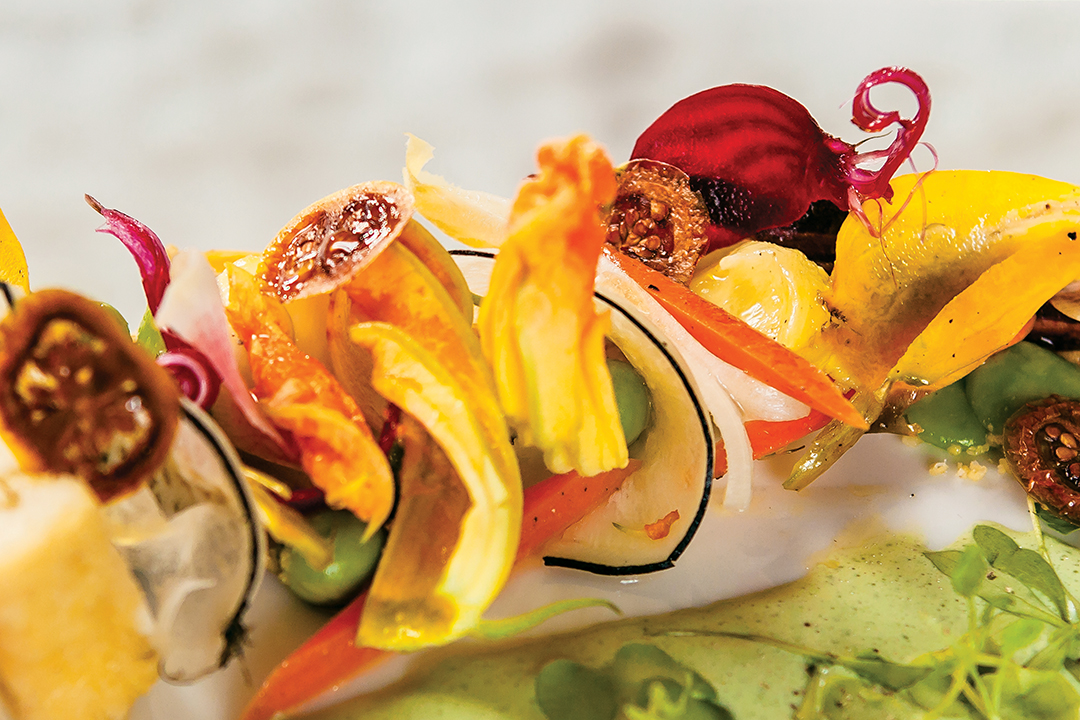
Macadamia cheese crumble with tarragon-spirulina sauce, squash blossom and black radish; Elizabeth’s Gone Raw; photo © Foster Wiley
The current wave of steakhouses, Korean barbecue restaurants and Brazilian churrascarias suggests Americans are unapologetically embracing their carnivorous cravings. Also flourishing, however, are vegan restaurants that shatter stereotypes of funky holes-in-the-wall accommodating struggling philosophers with tasteless sprouts. A new generation of vegan restaurants offers sophisticated, even elegant experiences with surprisingly little deprivation.
A vegan diet — the more politically correct term is “plant-based” cuisine — utilizes no animal products whatsoever, making it more restrictive than vegetarianism, and therefore stigmatized by those who assume such orthodoxy stifles creativity. But plant-based kitchens are suddenly attracting chefs that take their craft seriously, people trained in top culinary schools and Michelin-starred kitchens. Their customers are not exclusively herbivores, but mainstream diners simply seeking a change of pace, no different than going out for Thai or Peruvian food.
The Los Angeles diner is often typecast as a supermodel picking at her salad, so it is no surprise the city has its share of vegan establishments. But no restaurant in L.A. provides a better example of an imaginative chef elevating plant-based cuisine than Crossroads, where chef/owner Tal Ronnen turns out exquisitely plated dishes in a dining room with white linen-clad tables, trendy chandeliers and high-end finishes. “We wanted to create a dining experience that was comfortable and a little more refined than what most people think a vegan restaurant experience is all about,” says Ronnen.
“What we try to do at Crossroads is provide an experience that doesn’t feel like a sacrifice, but is actually a step up,” says Ronnen. The author of The Conscious Cook explains that the challenge of finding creative, vegan alternatives to traditional sauces like hollandaise or béarnaise is very exciting to him as a chef.
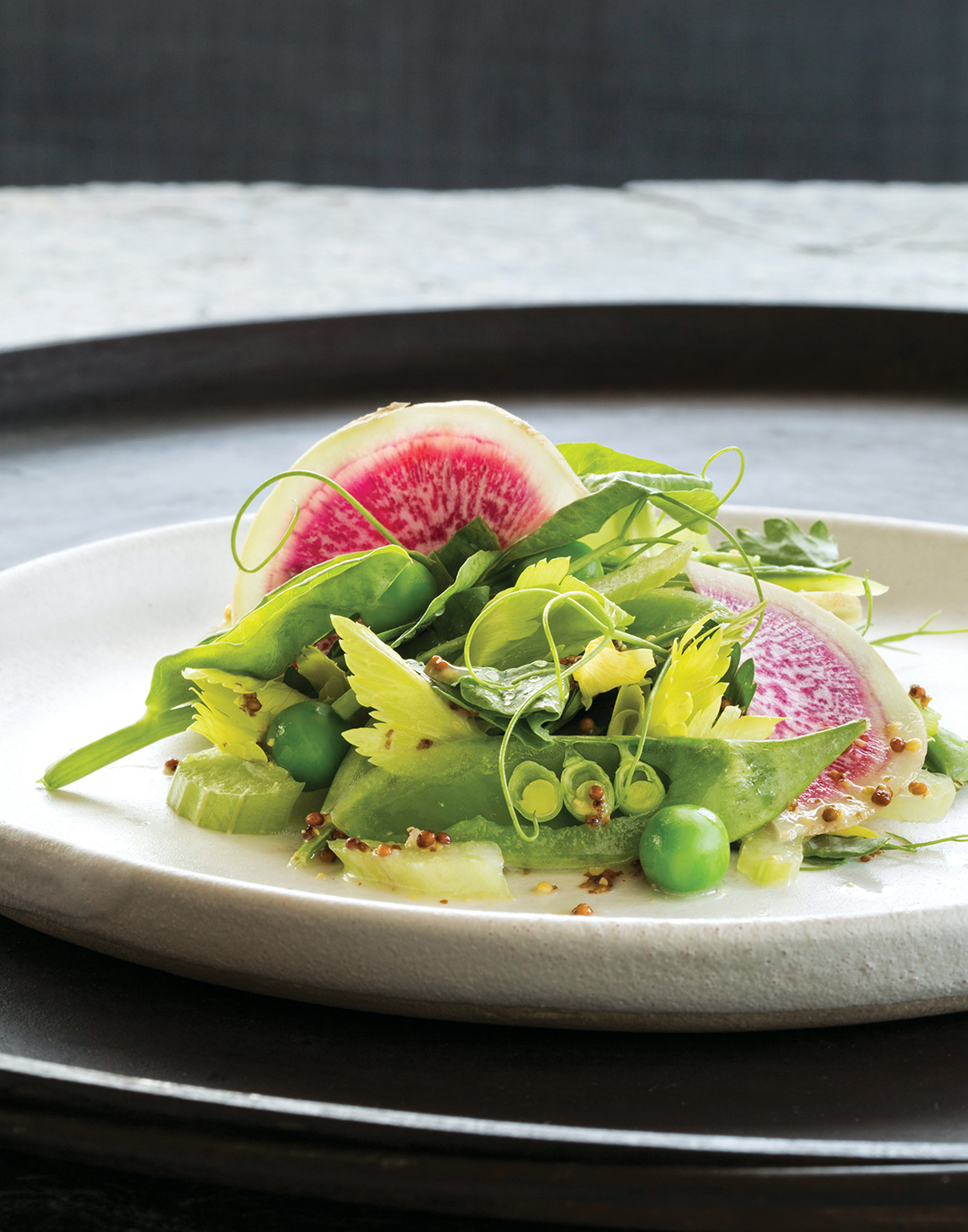
Spring chopped salad with whole-grain-mustard vinaigrette; Photo courtesy Crossroads
At Crossroads, the seasonally changing menu may include vichyssoise or tomato-watermelon gazpacho, pizza with truffle “cream” sauce, grilled vegetable lasagna, and even a cheese plate showcasing Kite Hill artisanal vegan cheeses. In the fall, a “seafood” tower is offered, with carrot “lox” standing in for smoked salmon with kelp caviar and almond milk “crème fraîche,” while tempura-battered lobster mushrooms suggest something far more indulgent.
Longtime Washington, D.C., caterer Elizabeth Petty turned to a raw vegan diet when she was recovering from breast cancer, but faced a pivotal dilemma regarding her career. “I lived and breathed food, so I knew I could take raw vegan cuisine to a level nobody had ever seen,” she recounts, and founded Elizabeth’s Gone Raw rather than abandoning her passion. The restaurant, occupying a sumptuously furnished 19th century Federalist-era townhouse not far from the White House, is the antithesis of the stereotypical countercultural vegan hole-in-the-wall.
Petty is passionate about the various benefits of maintaining a raw vegan diet, but retains a commitment to culinary sophistication and creativity, which executive chef Francisco Hernandez presents in exquisite seven-course meals every Friday evening. With artfully plated dishes like a silky red pepper soup with lavender-cabbage foam or a mushroom roulade with black truffle, salsa verde, yuzu and almond buttermilk cream, it is no wonder foodies of all stripes have discovered this highly personalized, heartfelt restaurant. Hardly a zealot — she occasionally cooks meat for her own family — Petty reports, “I’m not only happy to be alive but am so grateful people have embraced this cuisine and continue to express their
appreciation.”
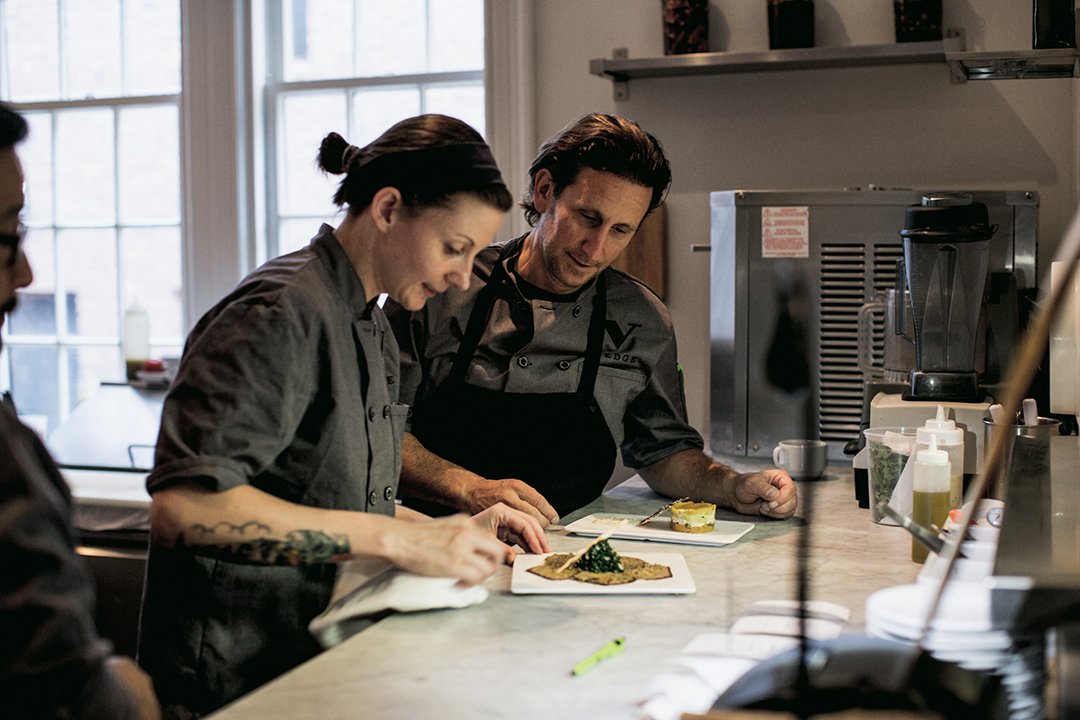
Rich Landau, executive chef/co-owner, and Valarie McCarro, kitchen manager; Photo courtesy Vedge.
In 1994, chef Richard Landau opened a humble food counter inside a natural food store, eventually marrying one of his customers, Kate Jacoby. Today the couple operates Vedge, ensconced in a historic brownstone in downtown Philadelphia, and both have earned James Beard Award nominations for their refined veggie-centric cooking. From a kitchen devoid of animal products comes an avocado stuffed with turmeric-tinted cauliflower or a playful riff on the city’s iconic Philly cheesesteak sandwich: house-made potato bread stuffed with maitake mushrooms in a “cheesy” sauce of roasted rutabaga. The all-natural wine list is nationally recognized, and pastry chef Jacoby creates a pretzel-crusted chocolate-peanut butter finale that is downright decadent.
Although Jacoby never proselytizes customers — most of them are foodies, but not full-time vegans — she states, “There’s such a strong argument for health and environmental impact in choosing a vegan lifestyle.” The couple’s second restaurant, V Street, offers a more casual vegan experience. “V Street is more fun, more daring and spicier, inspired by street foods from around the world,” reports Jacoby.
When he is not working as a private celebrity chef, keynote speaker or consultant, Matthew Kenney oversees restaurants in his native Maine, Miami, L.A., and New York City, with another opening in the Persian Gulf state of Bahrain next year. The Miami location of Plant Food + Wine, designed by renowned architect Rene Gonzalez, features a gorgeous palm-studded wooden deck surrounding a seductively illuminated reflecting pool. “Our cuisine is modern, clean and organic, and we create environments to fit this vision,” explains Kenney.
“Cooking plant-based has challenged me to look at ingredients in a new way,” explains Kenney. Meats may be off limits at Plant Food + Wine, but a mushroom pâté can provide the illusion of something much richer, while watermelon poke, coconut ceviche tacos and kimchi dumplings populate a globally inspired menu. A five-course tasting menu with optional wine pairings is offered, and desserts range from vegan tiramisu to strawberry-hibiscus cheesecake.
Culinary diversity for vegans is provided at San Francisco’s Gracias Madre, whose Mexican-themed menu offers gorditas with salsa verde, avocado and cashew crema, and vegan tamales. Beyond Sushi, a New York vegan mini-chain from classically trained, Israeli-born chef Guy Vaknin, dispenses eye-popping black rice sushi with curried cauliflower and almond pesto, or a spicy mango roll topped with toasted cayenne sauce.
“I always wanted to create beautiful, nutritious food and deliver fantastic culinary experiences,” reports Kenney, a sentiment that could be attributed to any passionate chef, not just an advocate of plant-based cuisine.
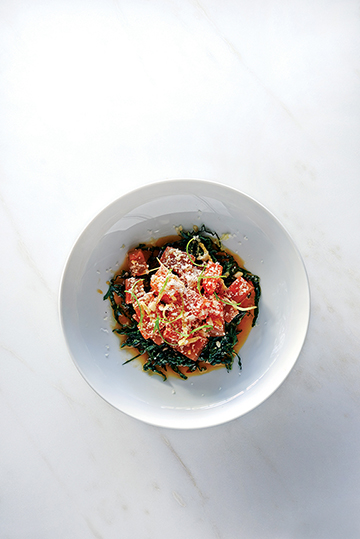
Wood Roasted Carroy by Vedge
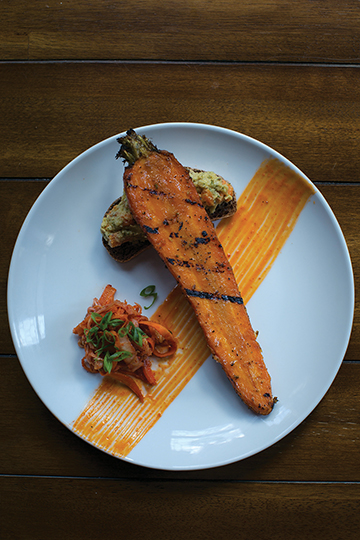
Watermelon Poke by Plant Food + Wine
Guiltless Indulgence
Beyond Sushi 229 E. 14th St., New York City, 646.861.2889 (and two other locations); www.beyondsushinyc.com
Crossroads 8284 Melrose Ave., Los Angeles, 323.782.9245; www.crossroadskitchen.com
Elizabeth’s Gone Raw 1341 L St. NW, Washington, D.C., 202.347.8349; www.elizabethsgoneraw.com
Gracias Madre 2211 Mission St., San Francisco, 415.683.1346; www.gracias-madre.com
Plant Food + Wine 1009 Abbot Kinney Blvd., Venice, California, 310.450.1009; 105 NE 24th St., Miami, 305.814.5365; www.matthewkenneycuisine.com
Vedge 1221 Locust St., Philadelphia, 215.320.7500; www.vedgerestaurant.com
V Street 126 S. 19th St., Philadelphia, 215.278.7943; www.vstreetfood.com














